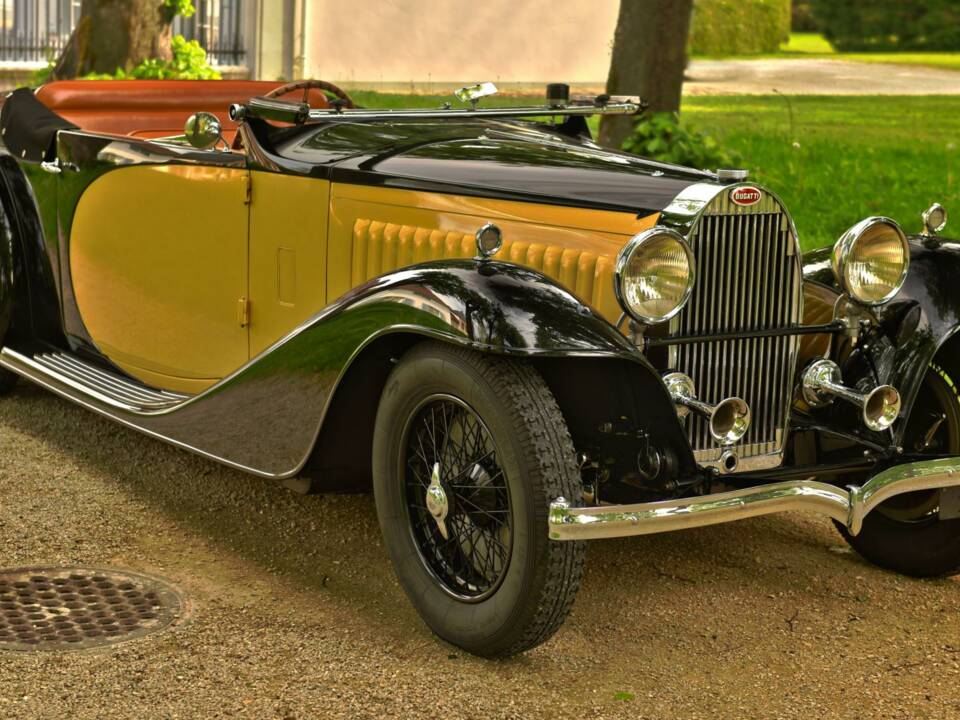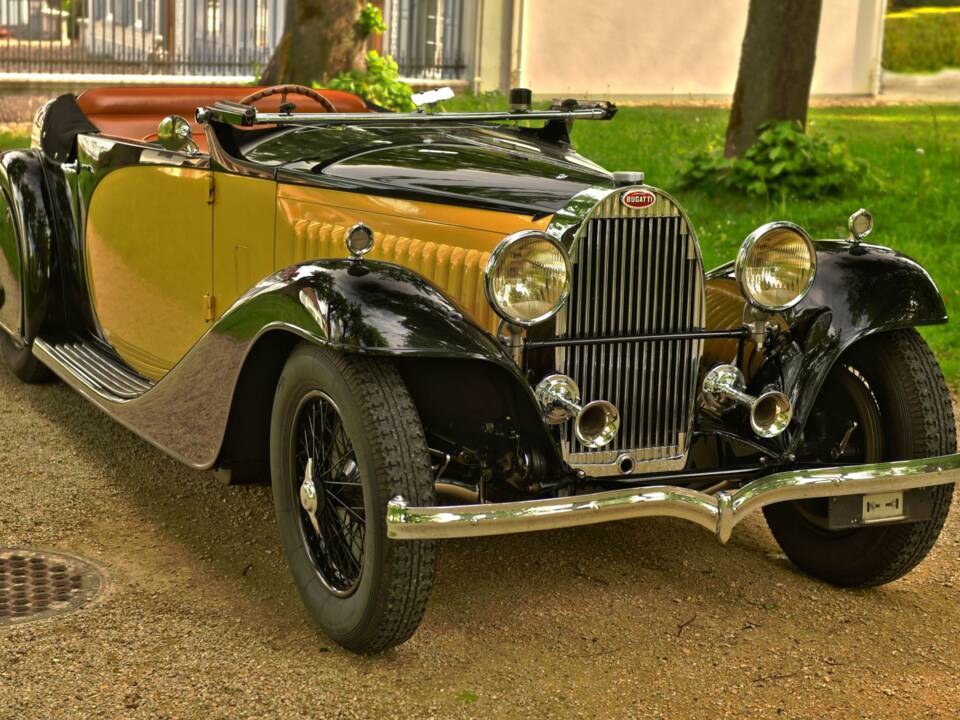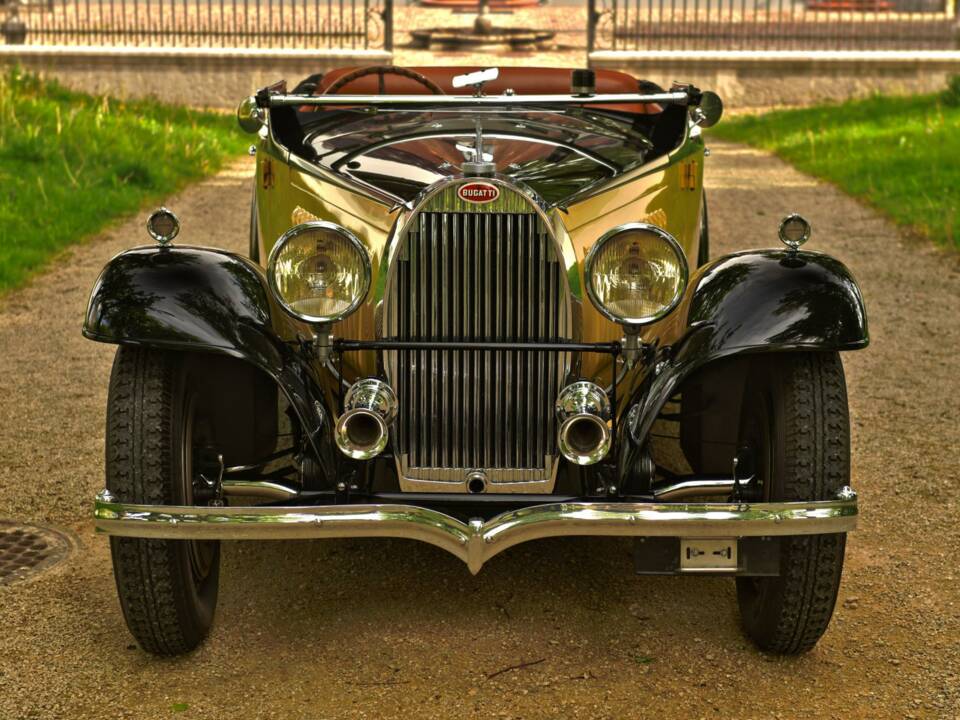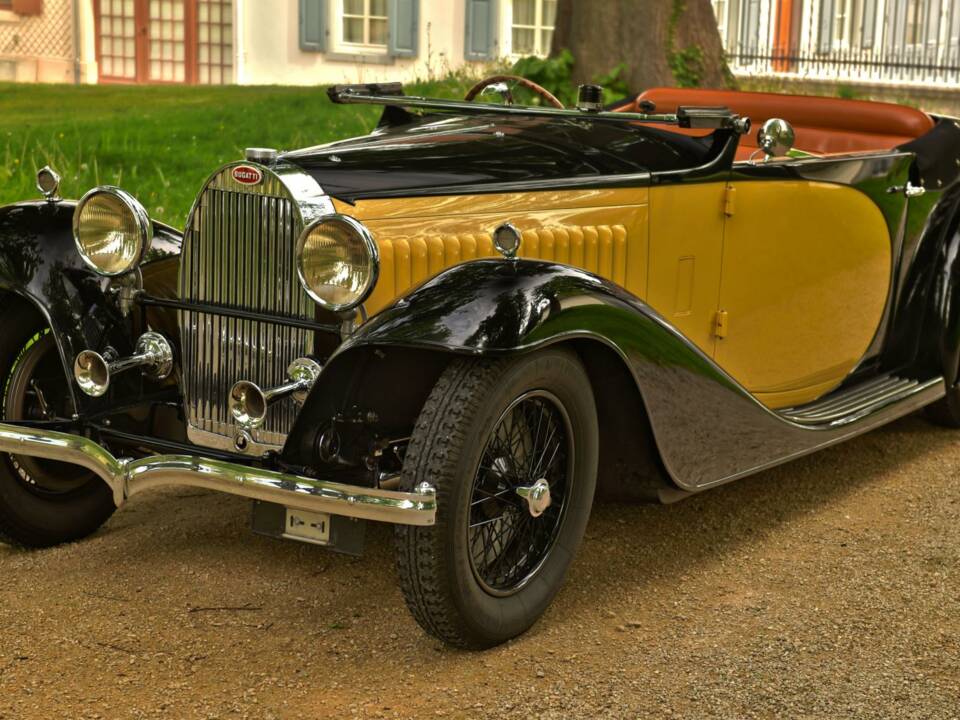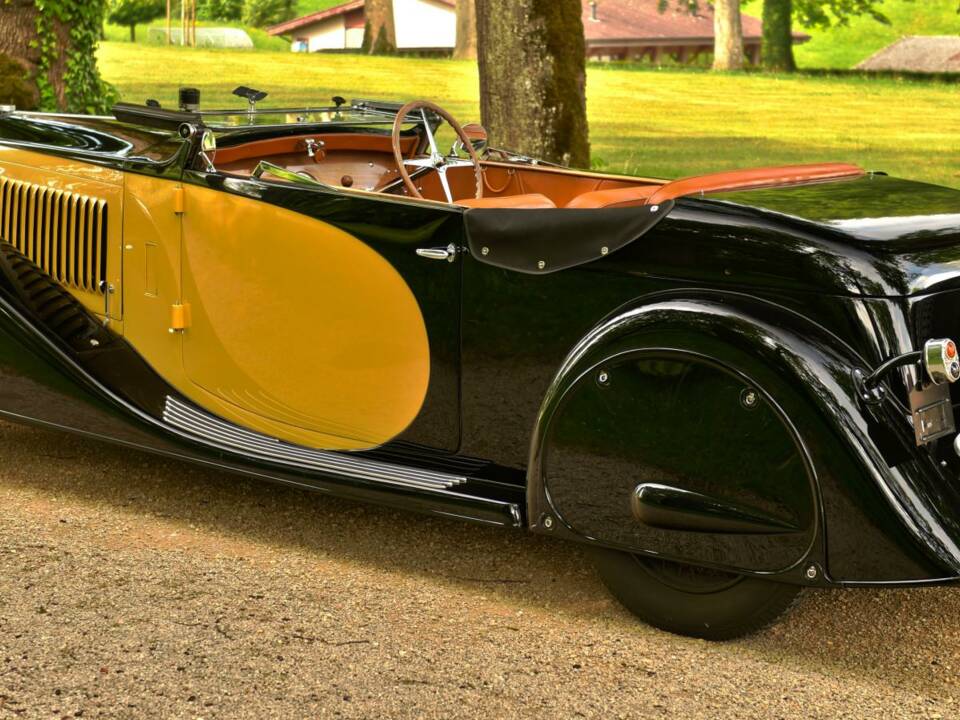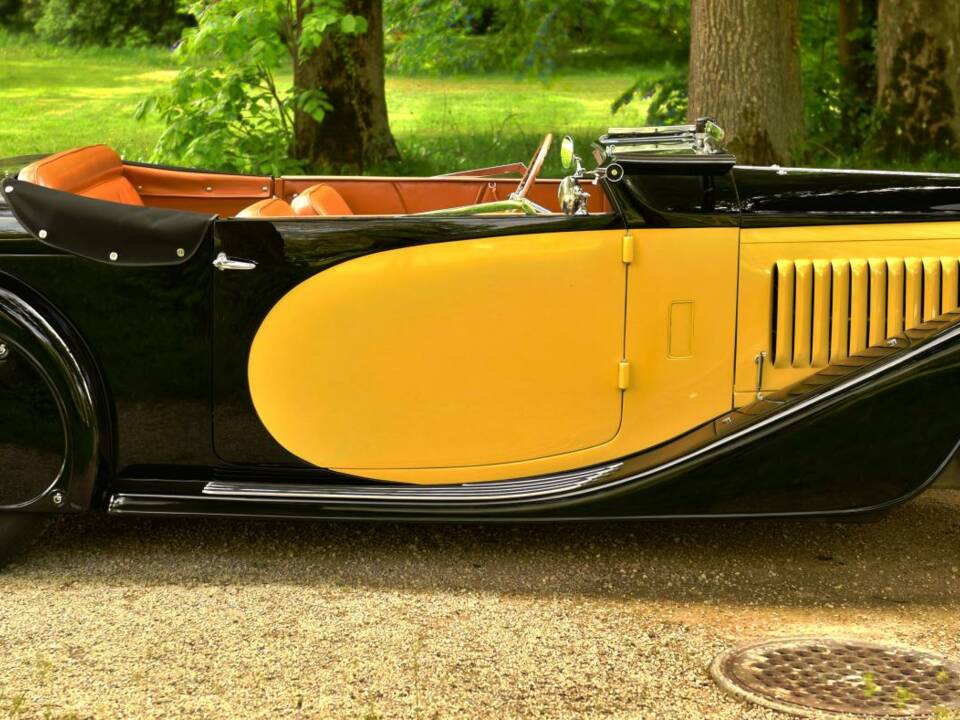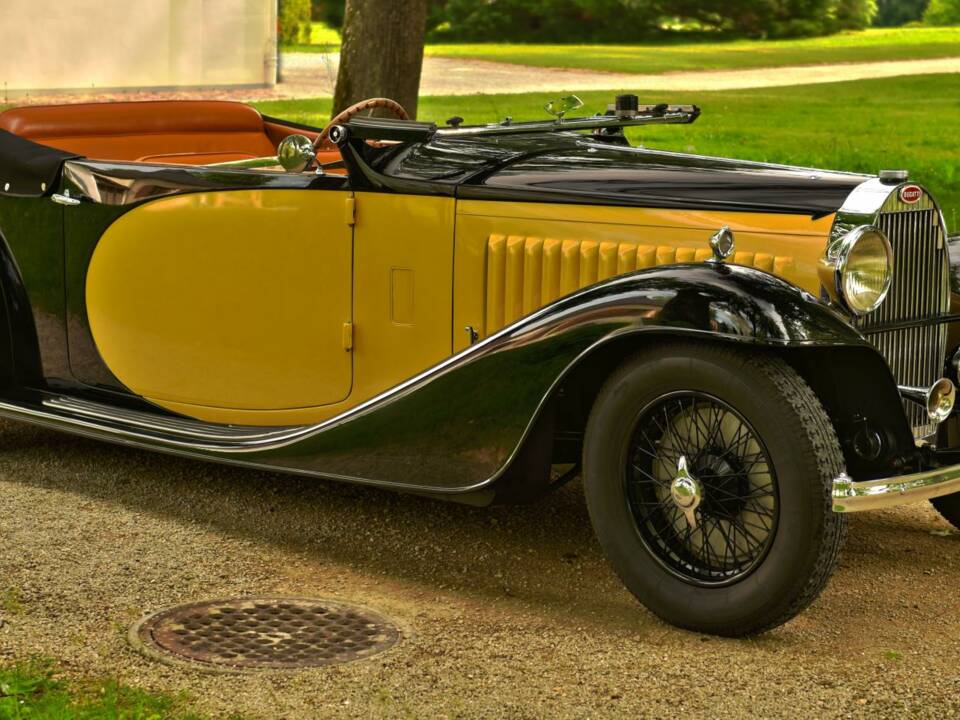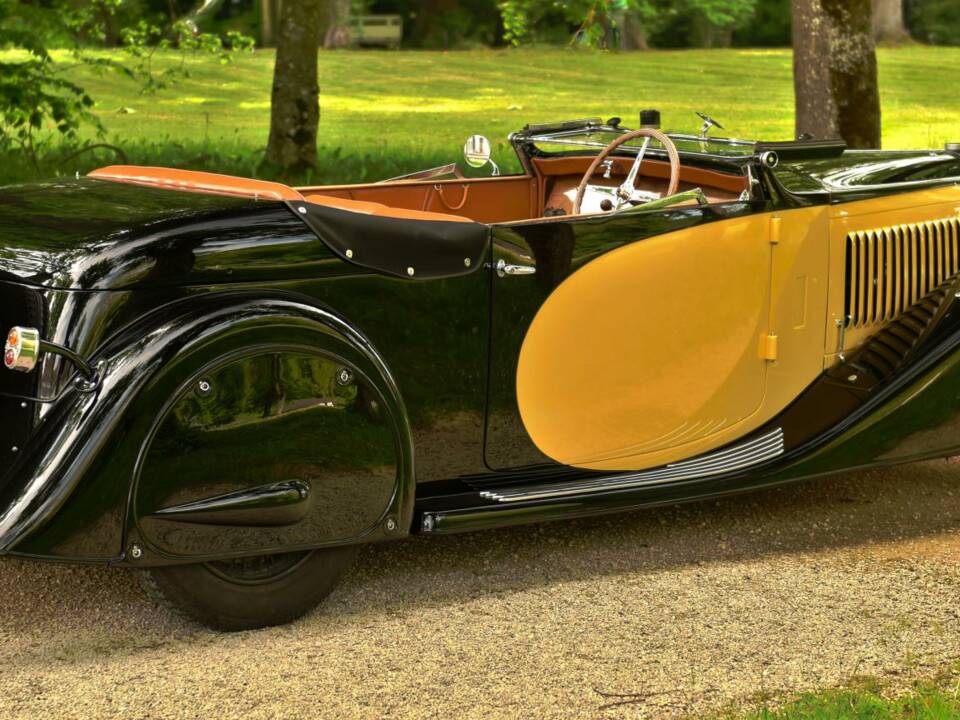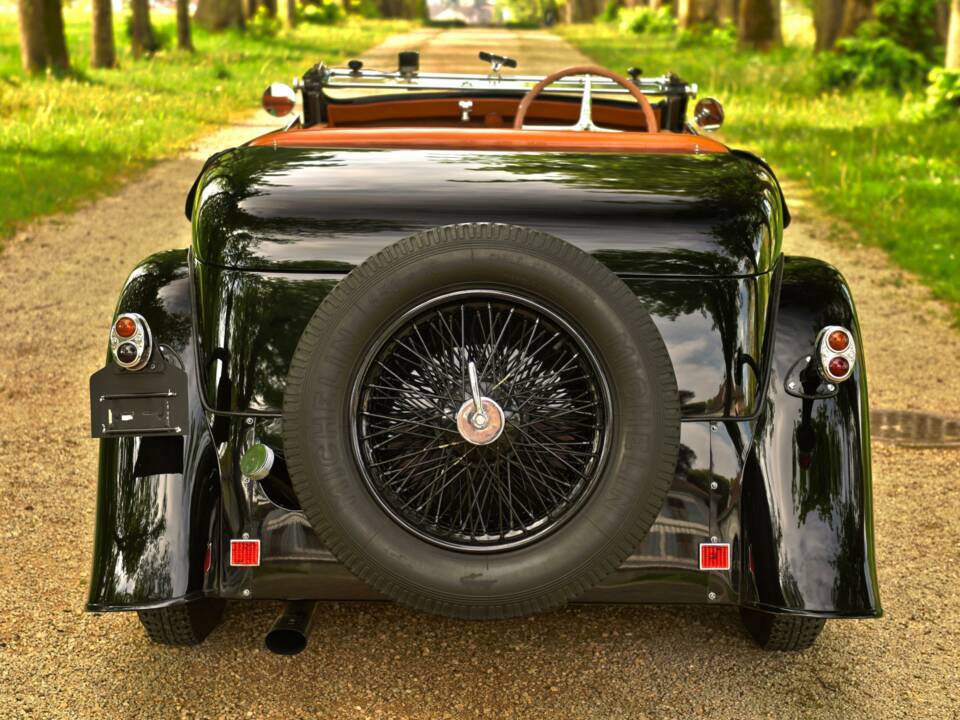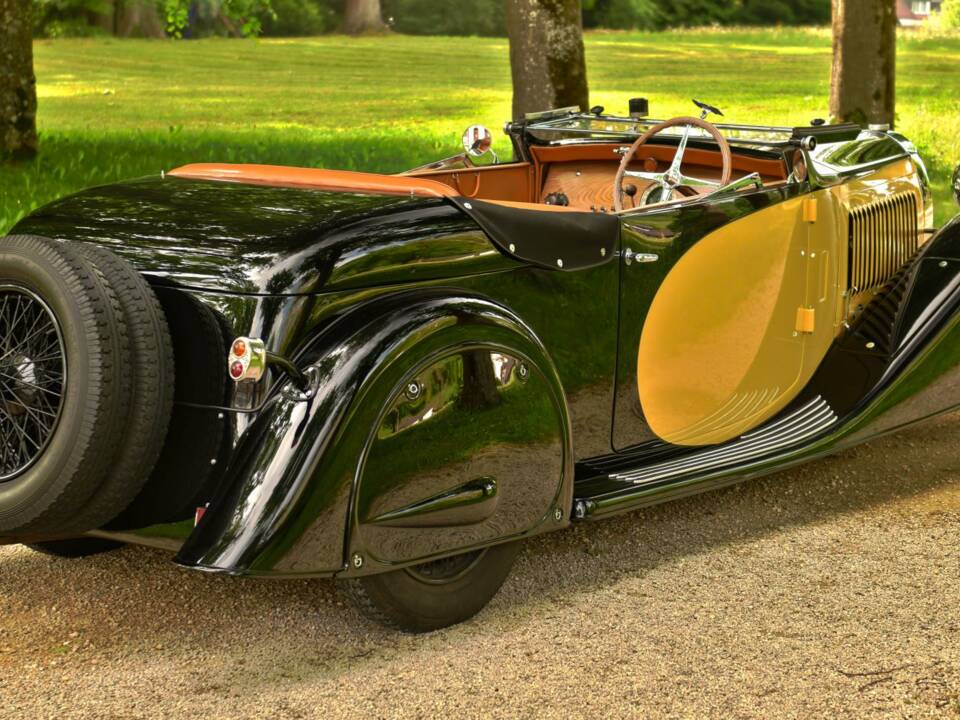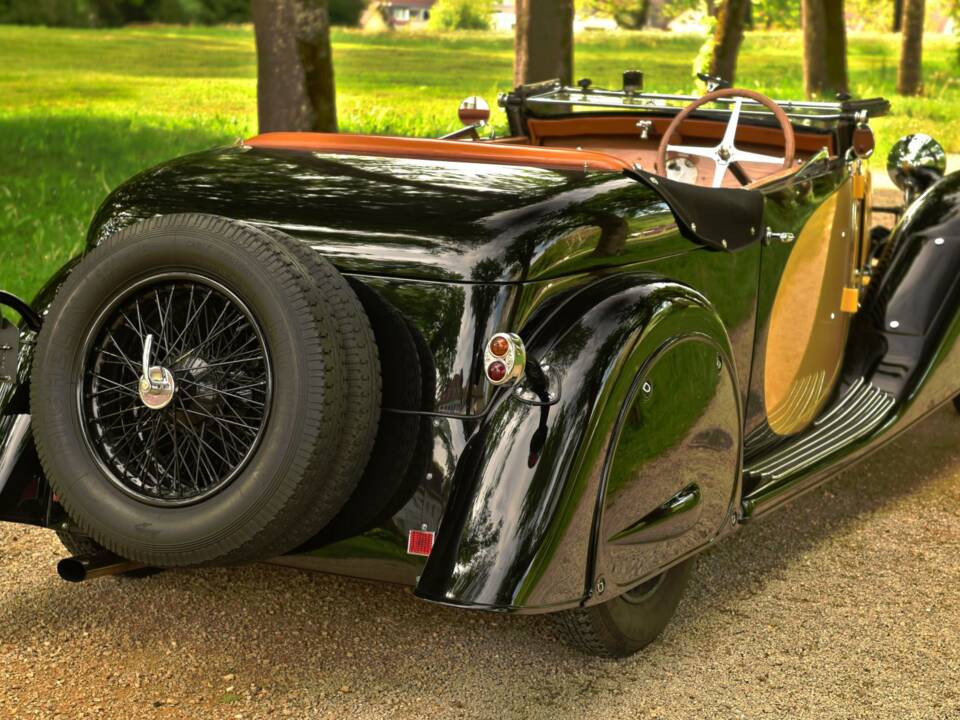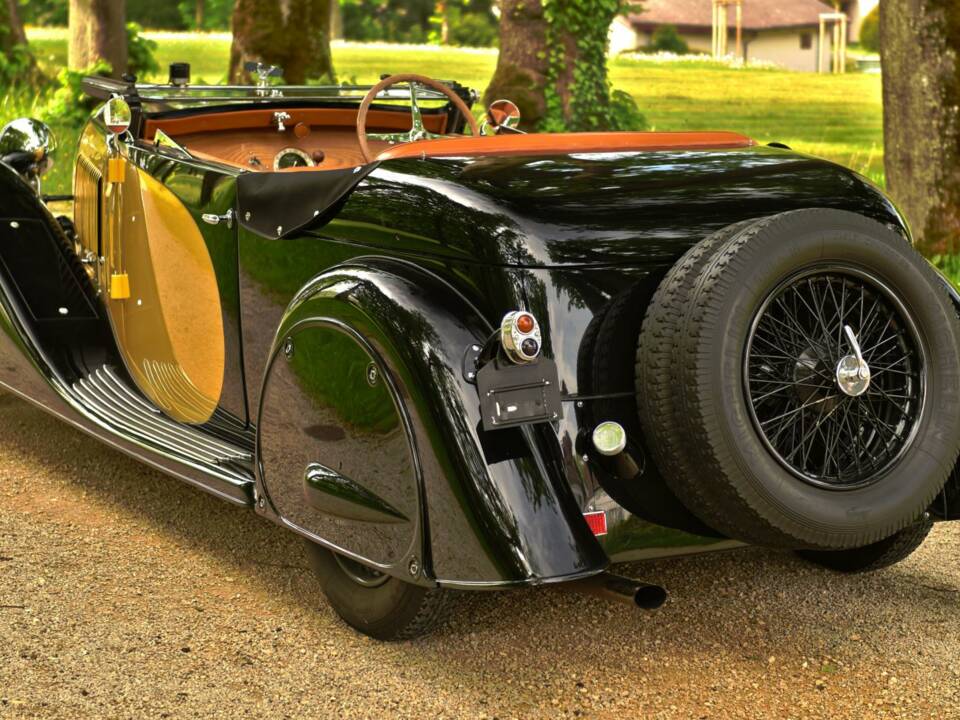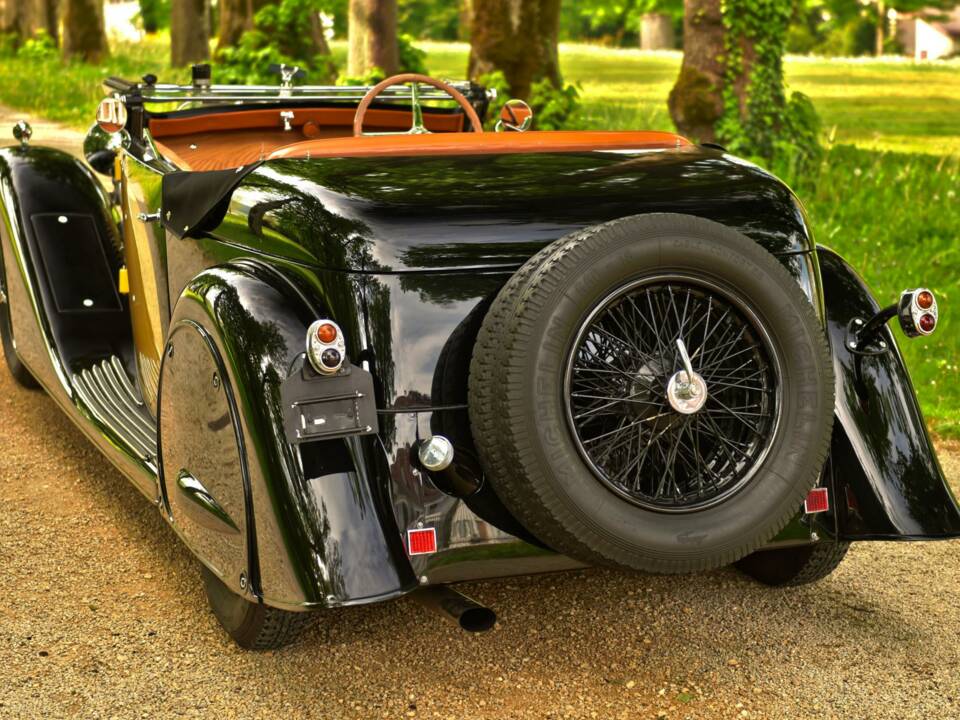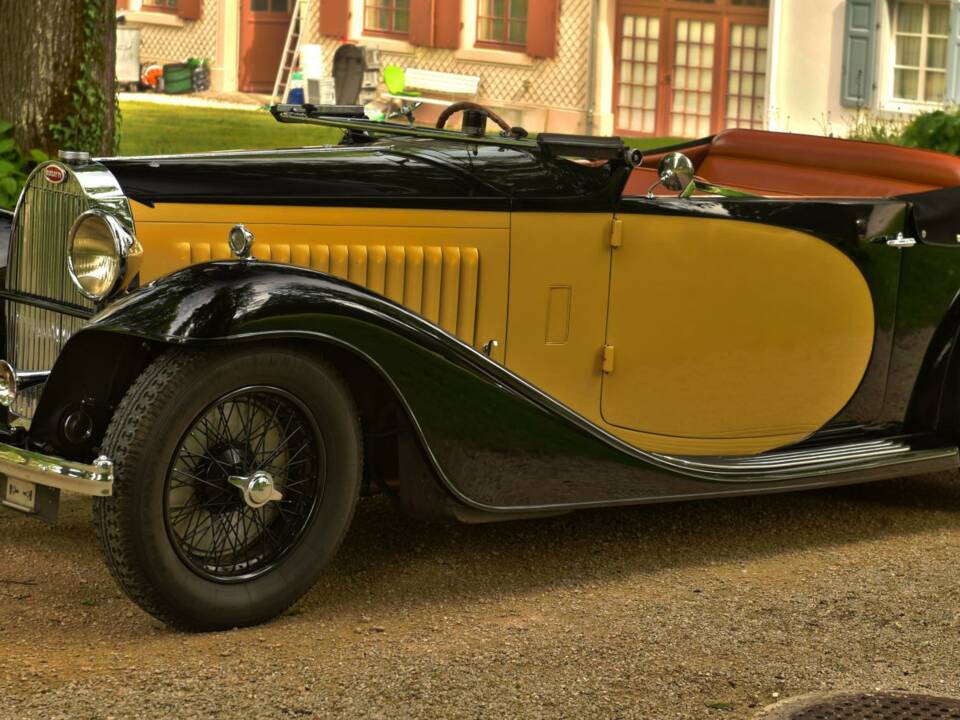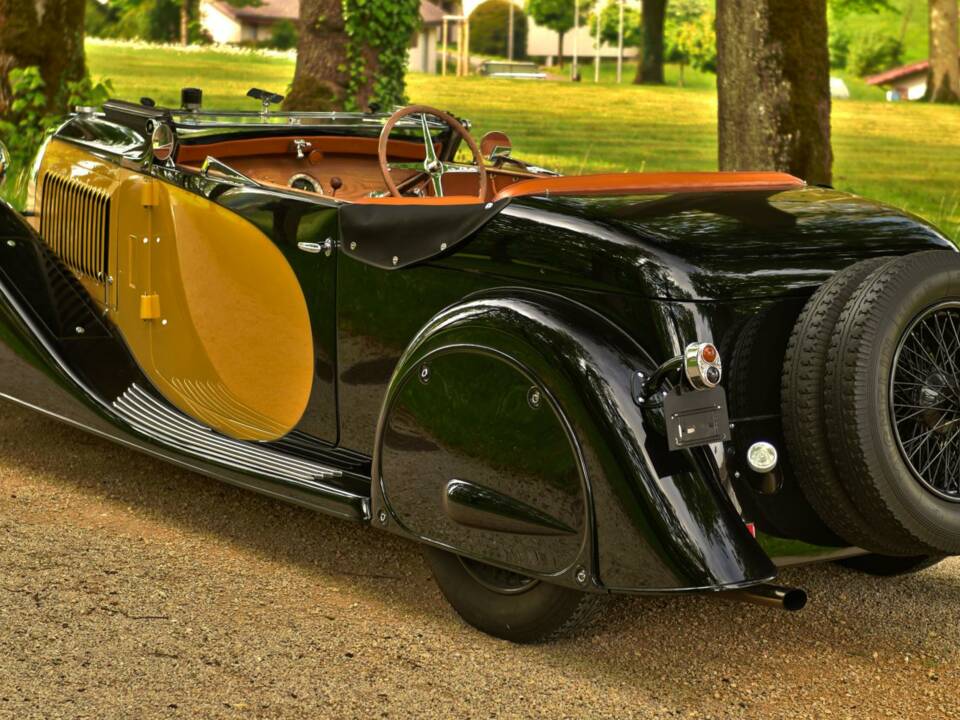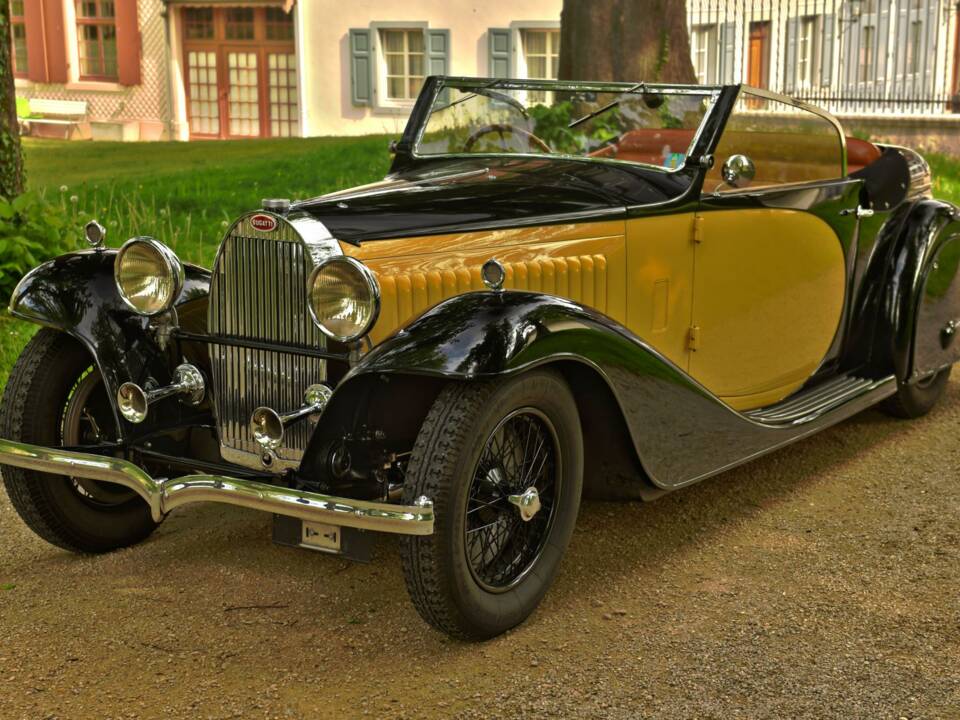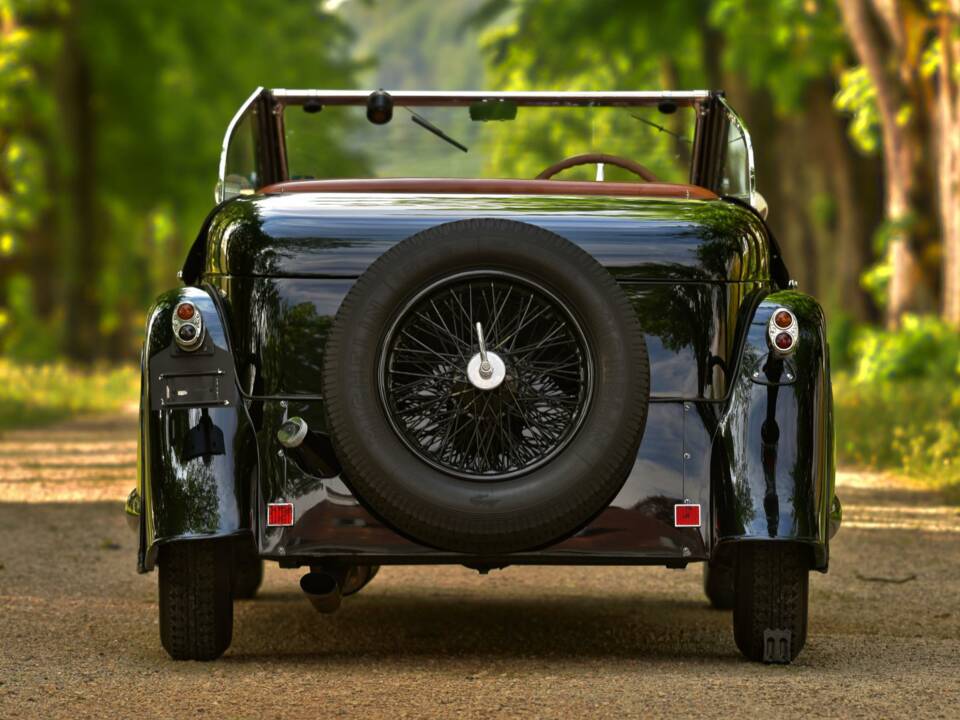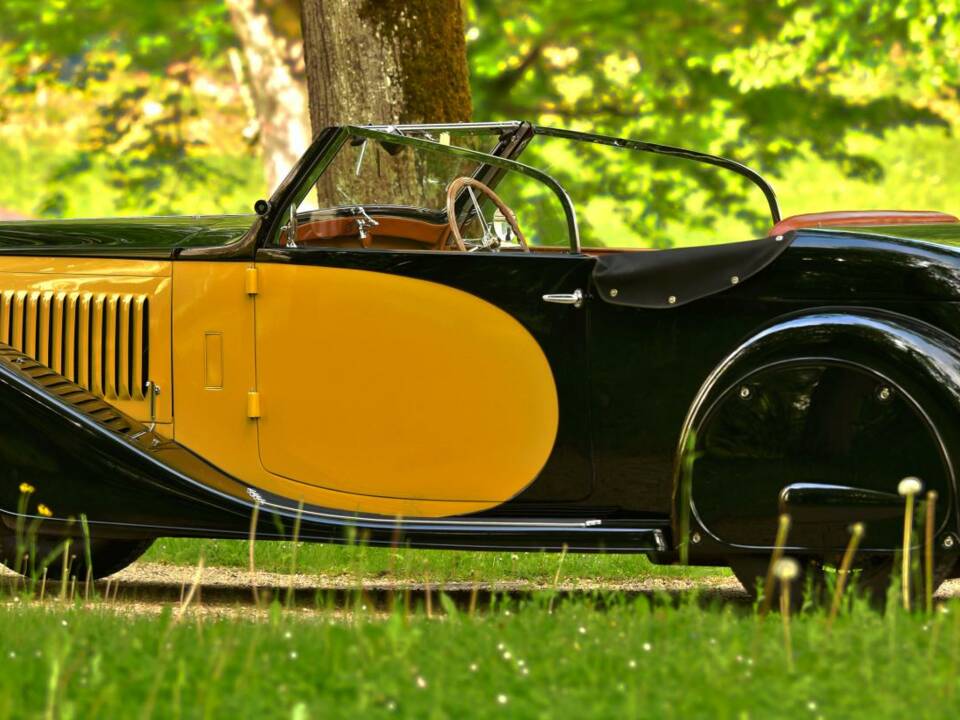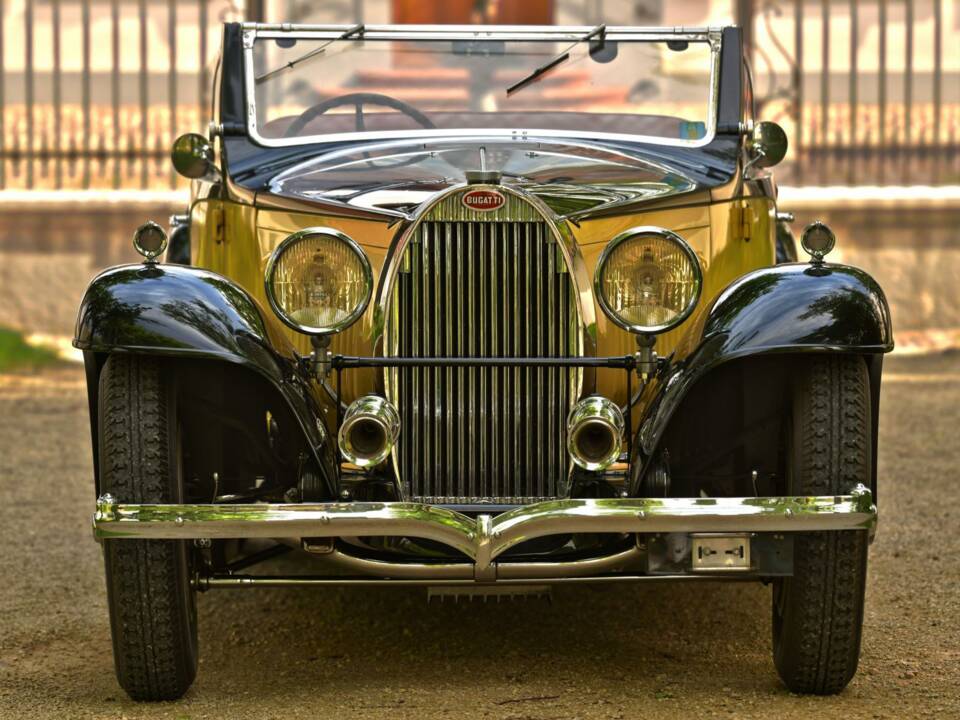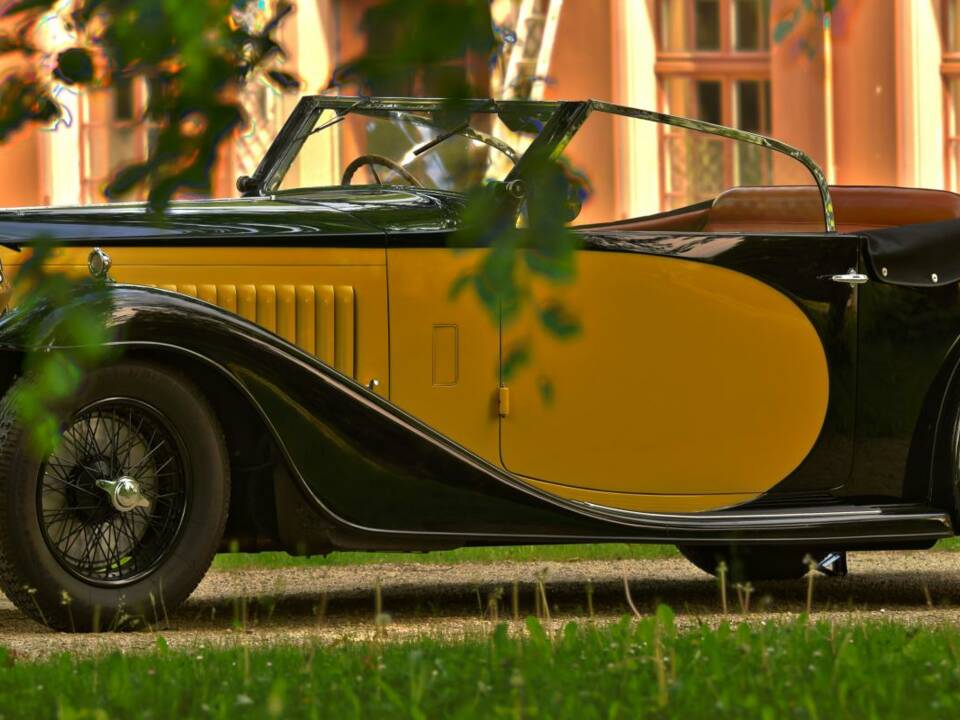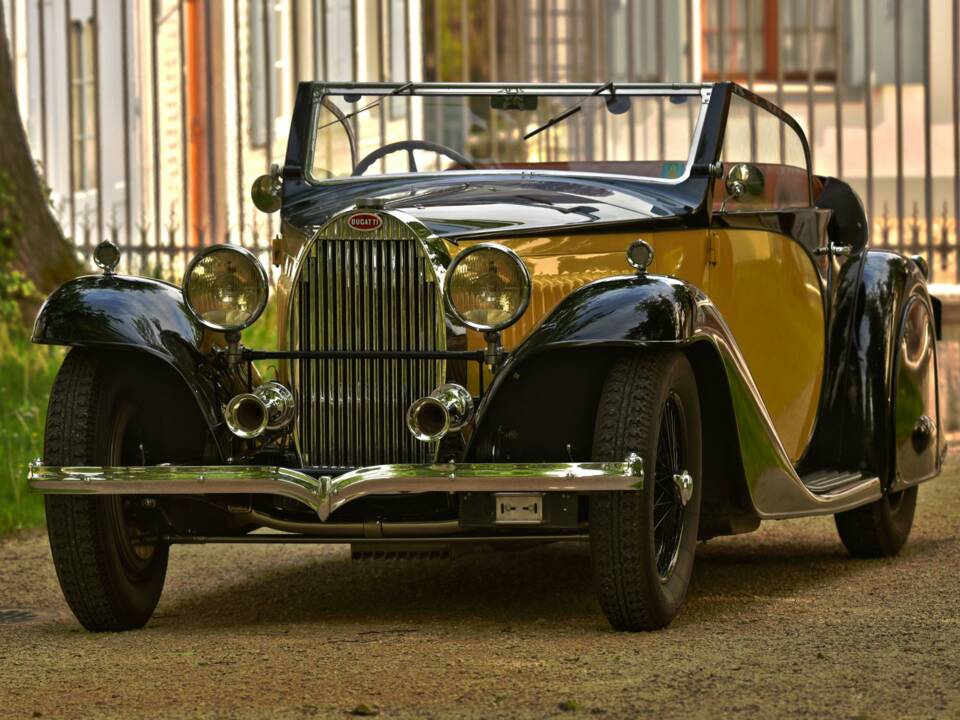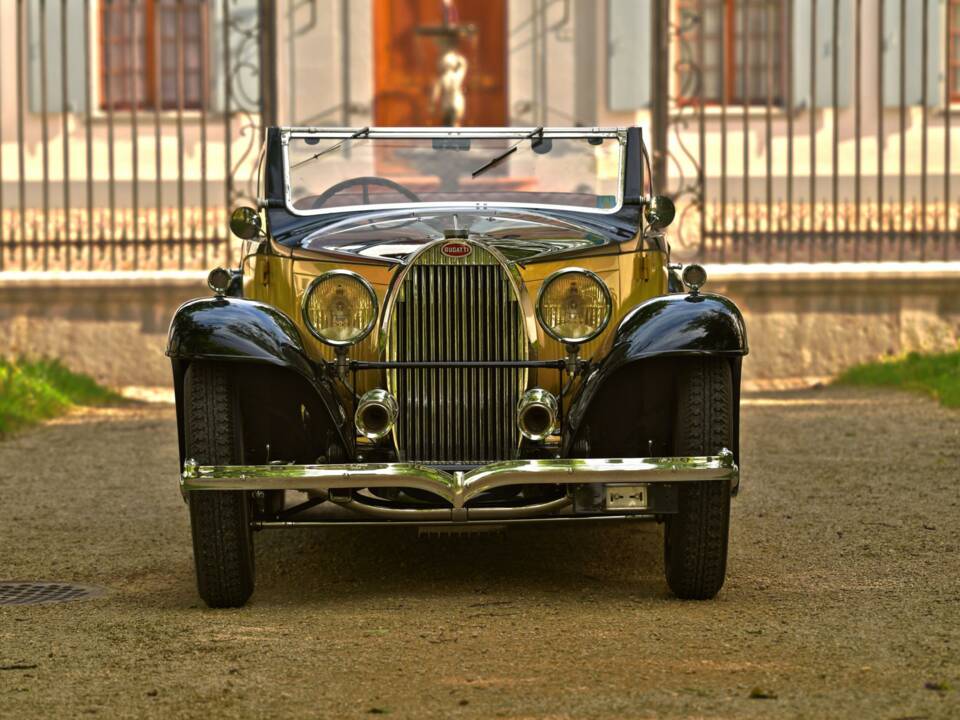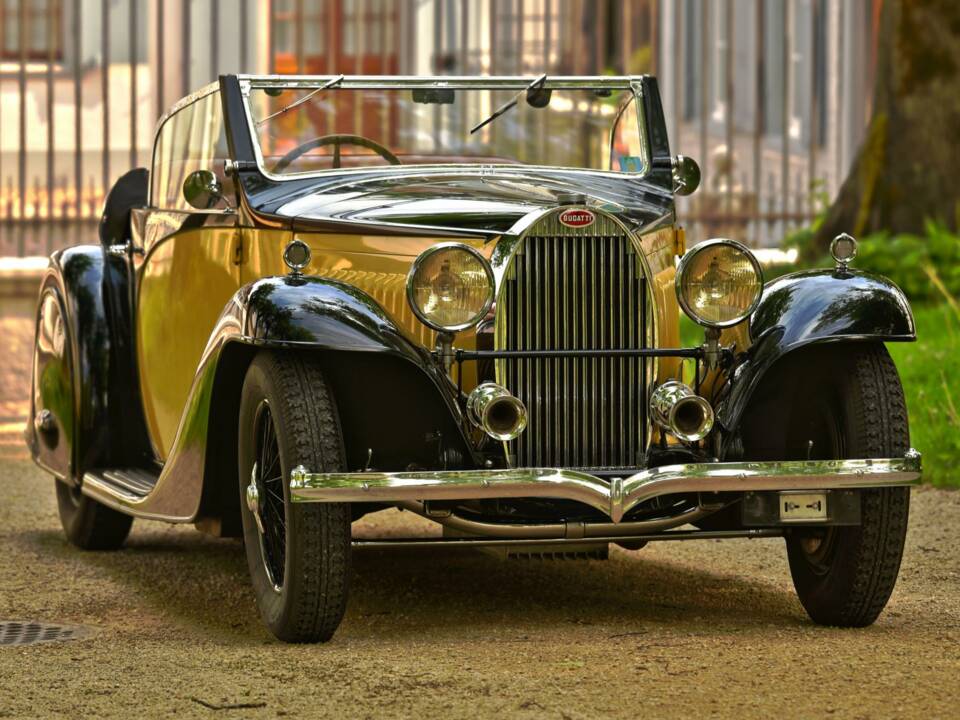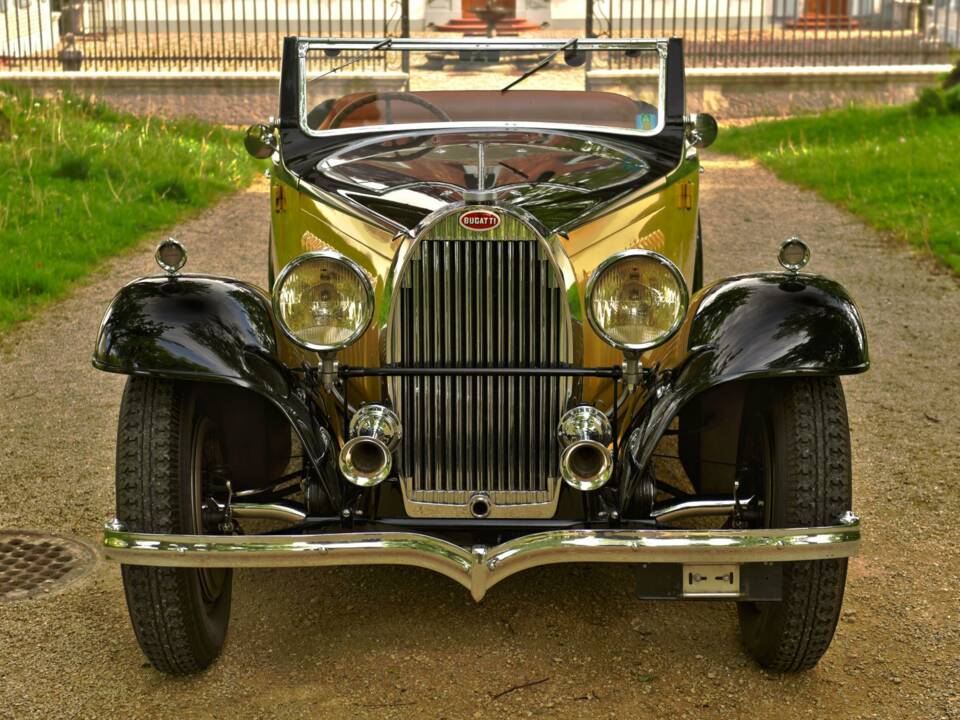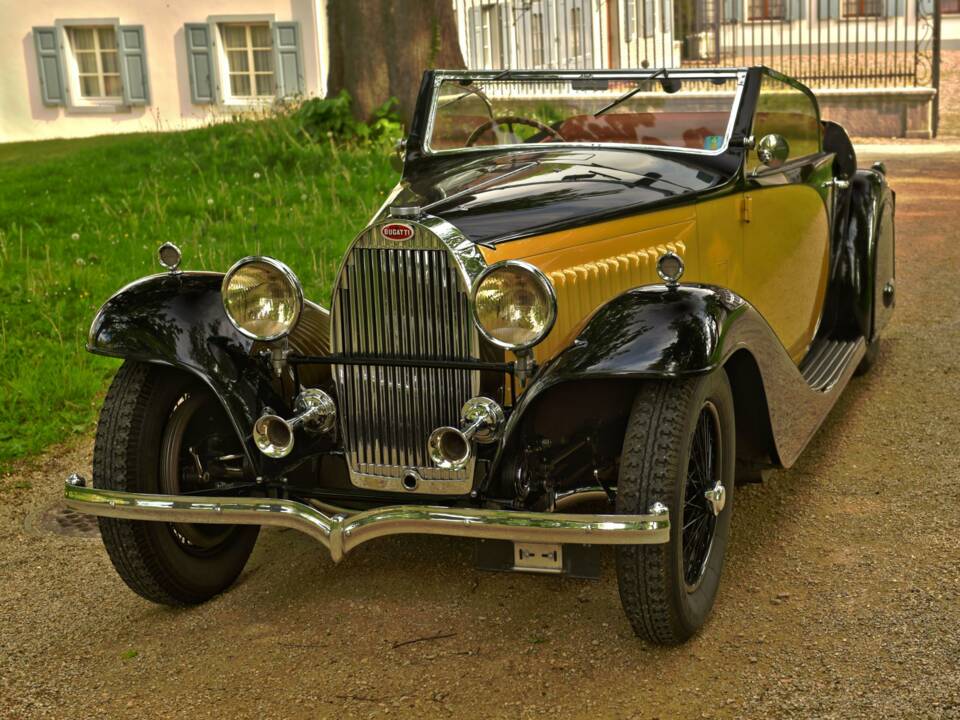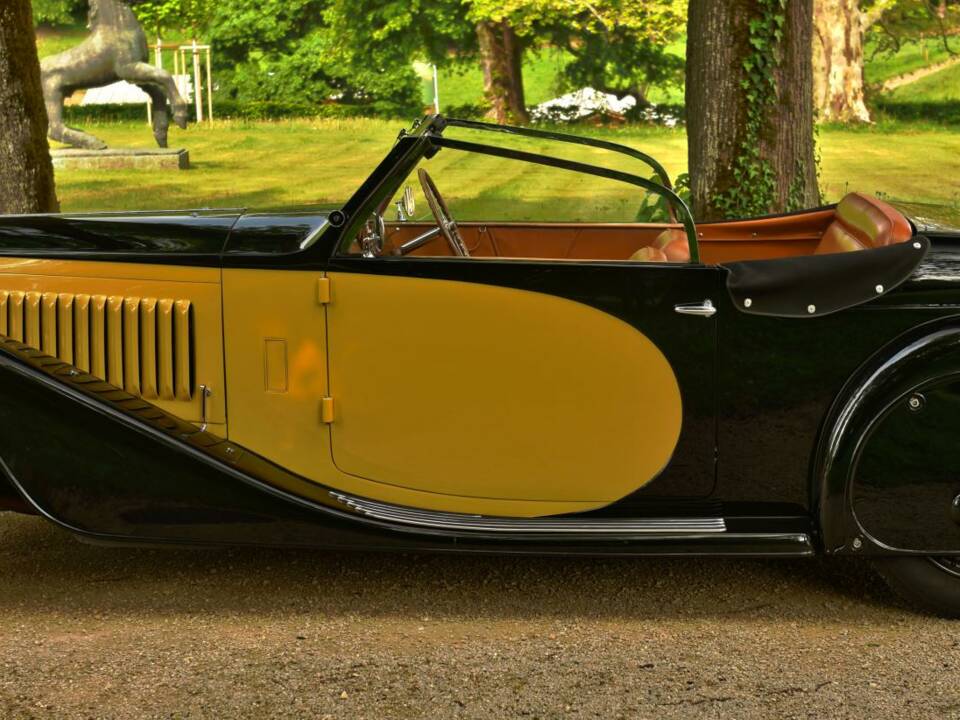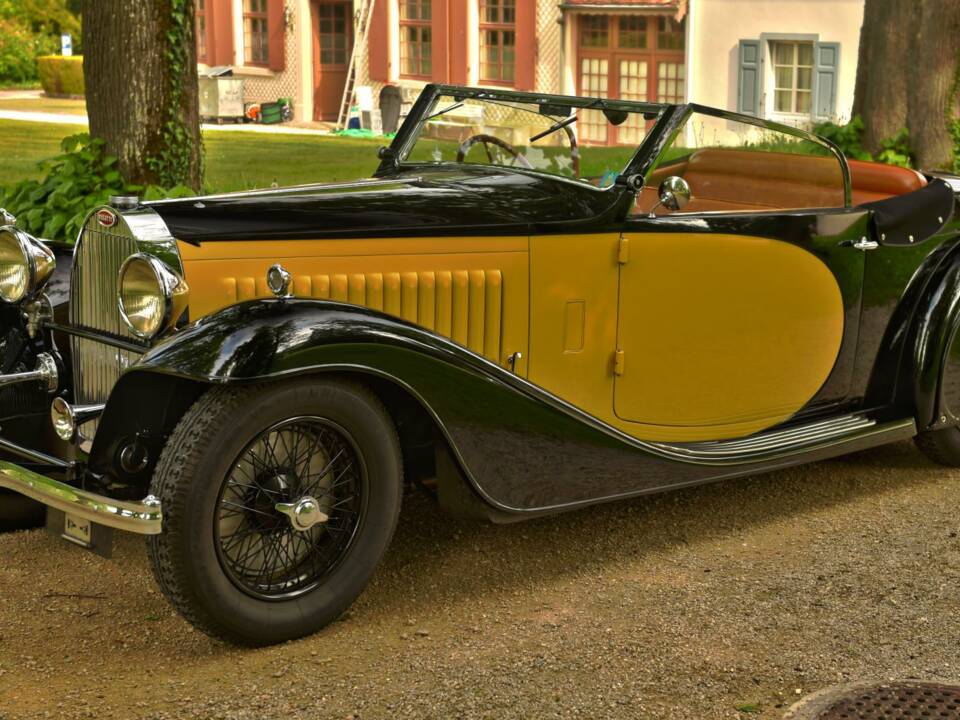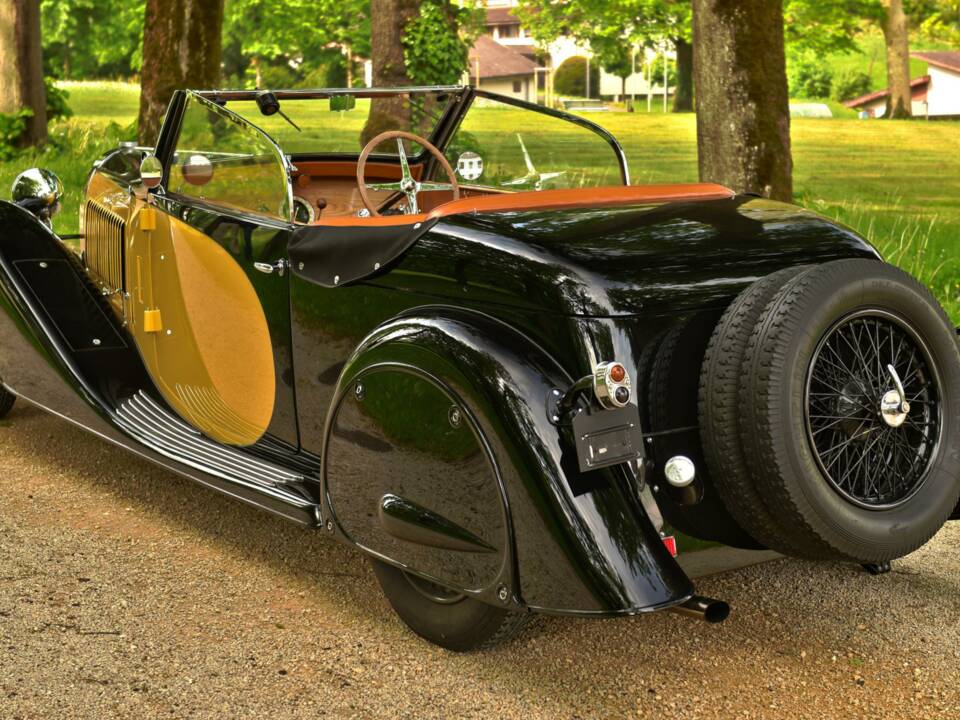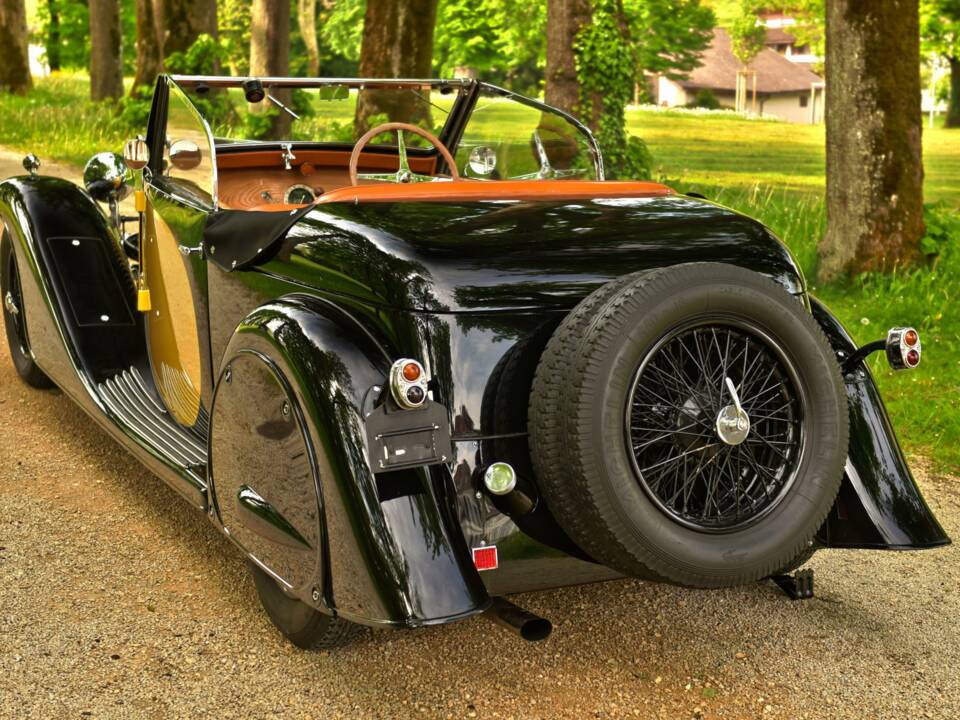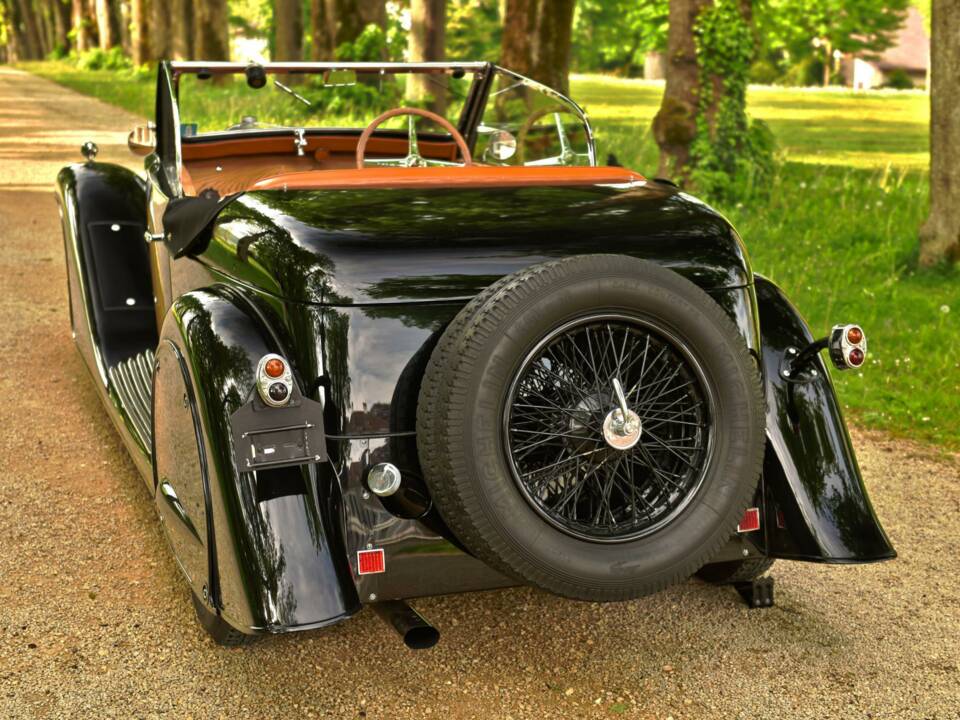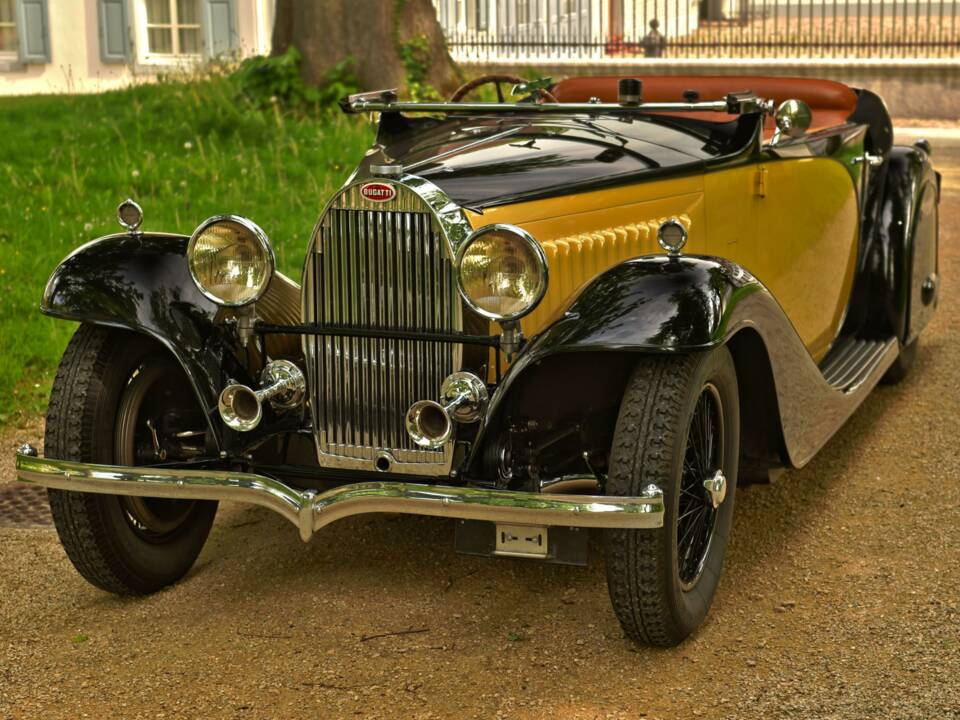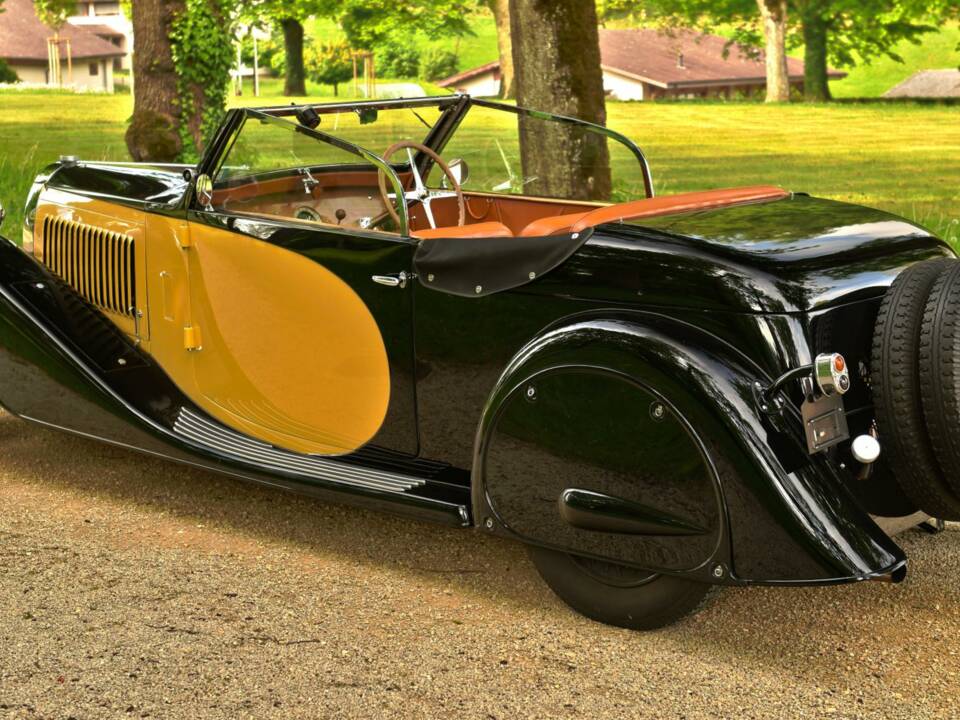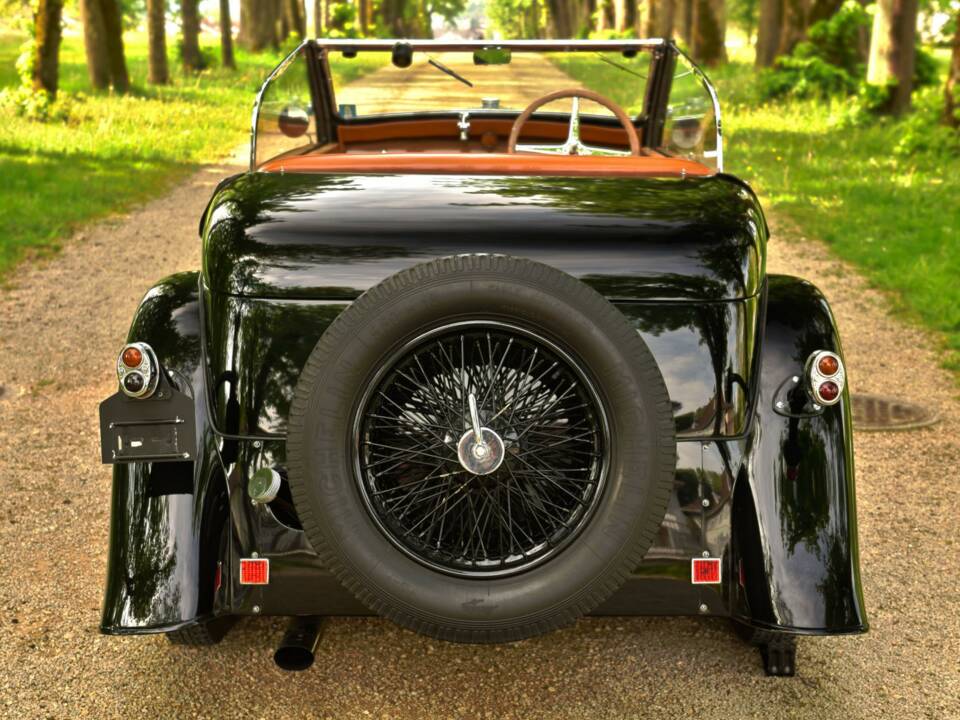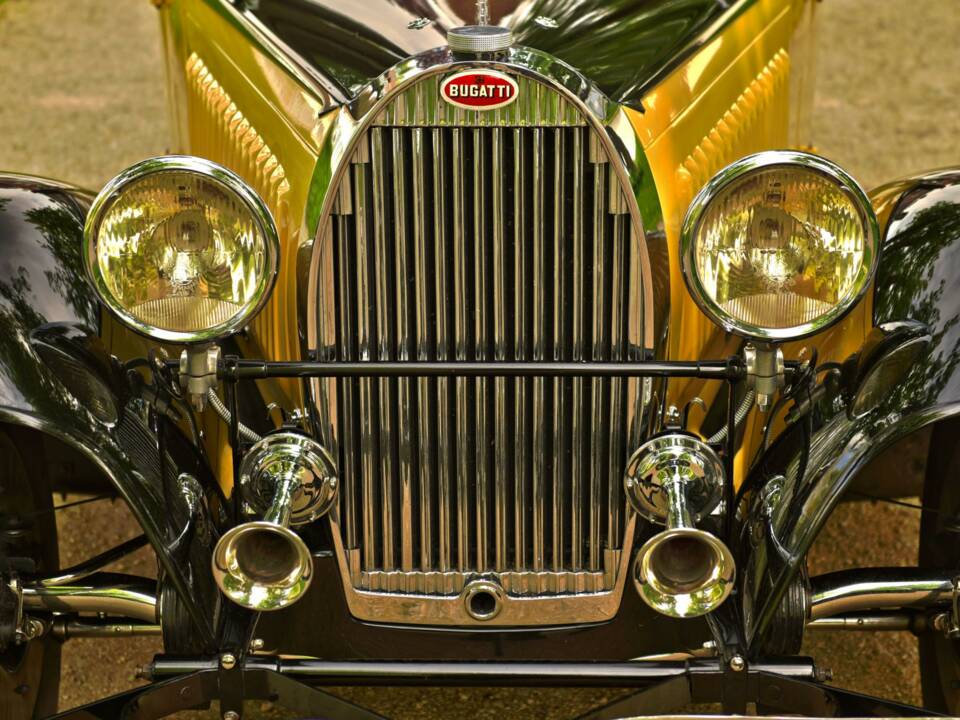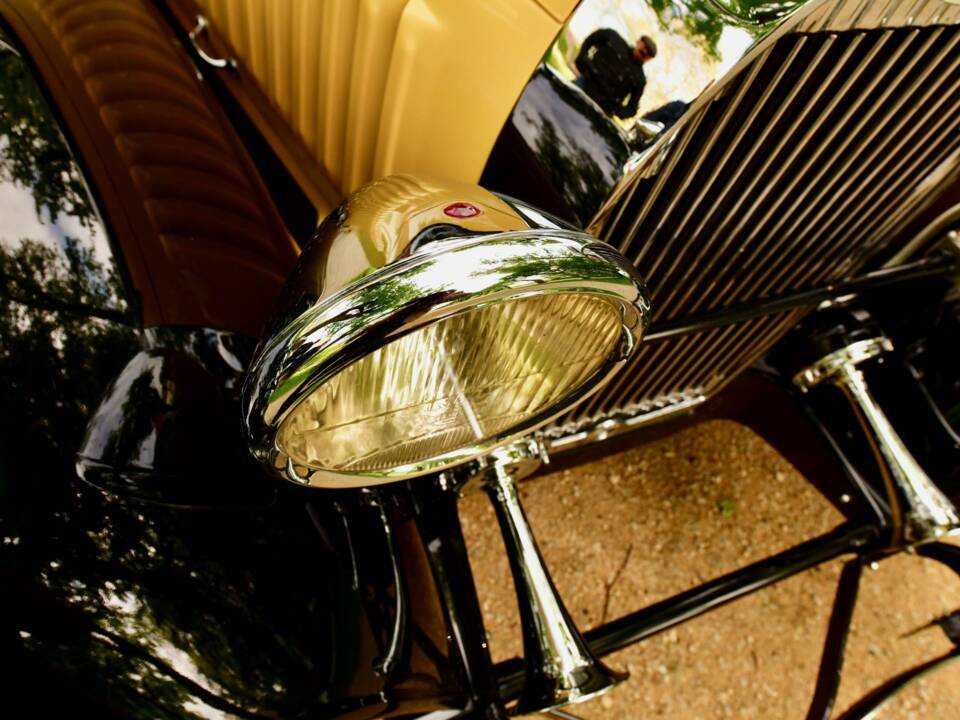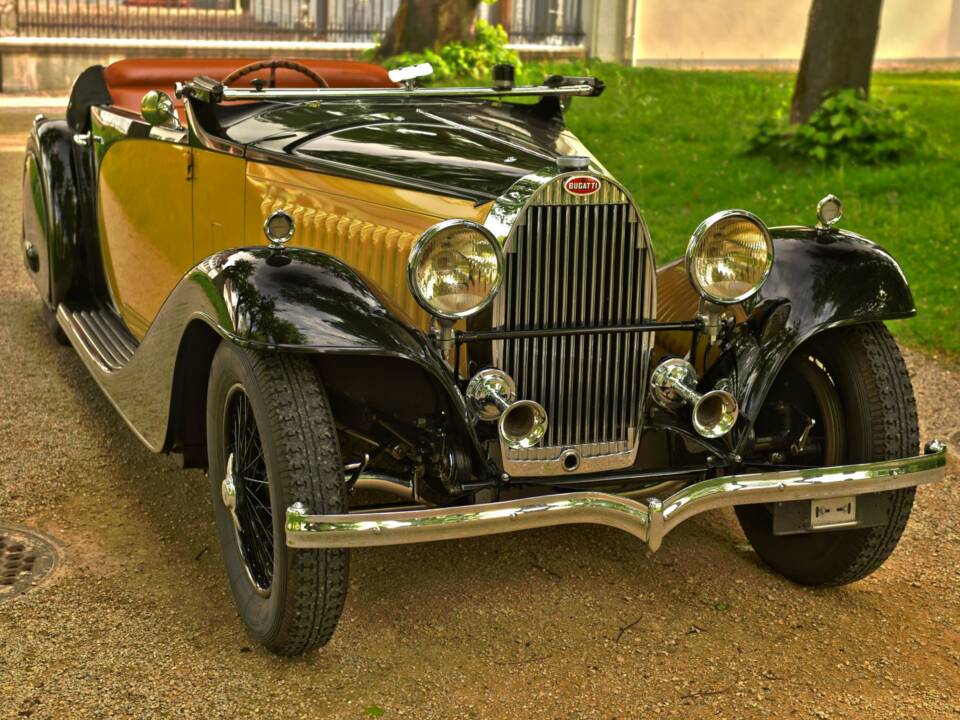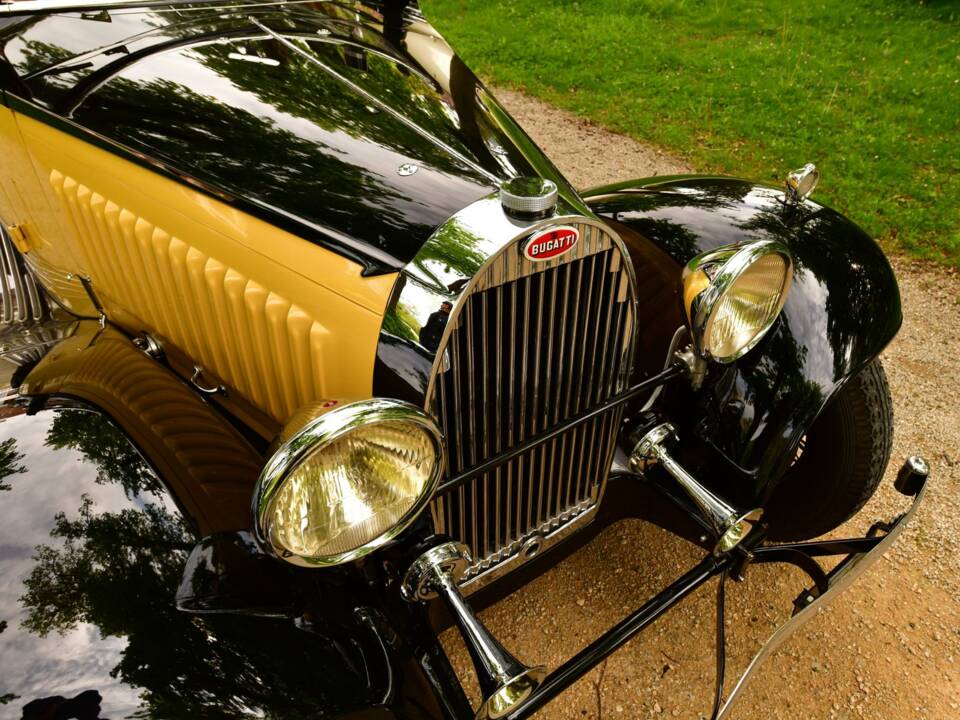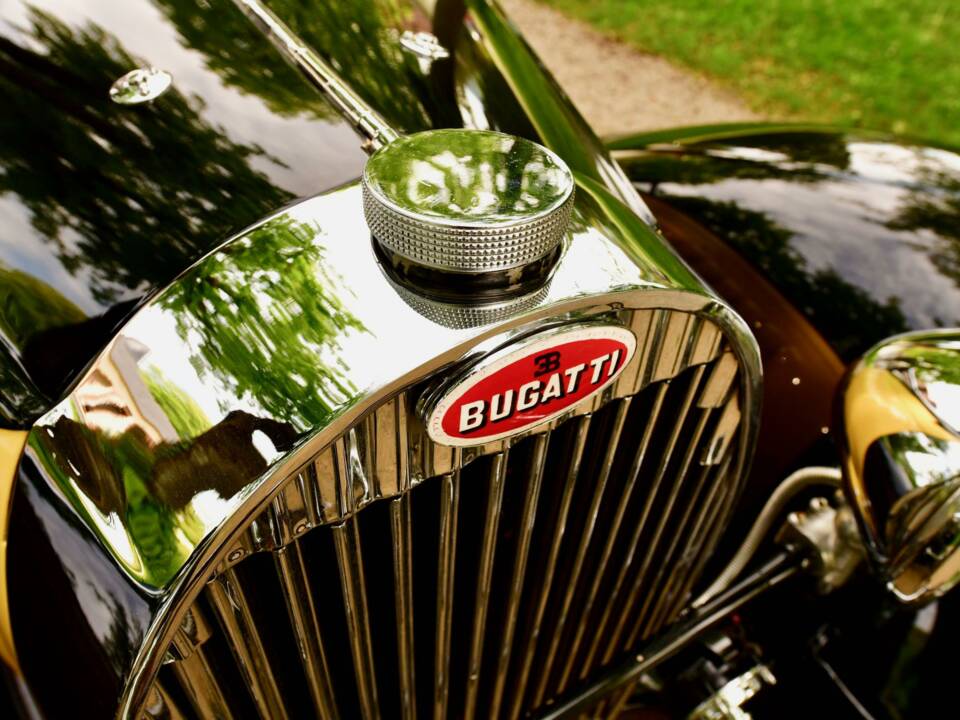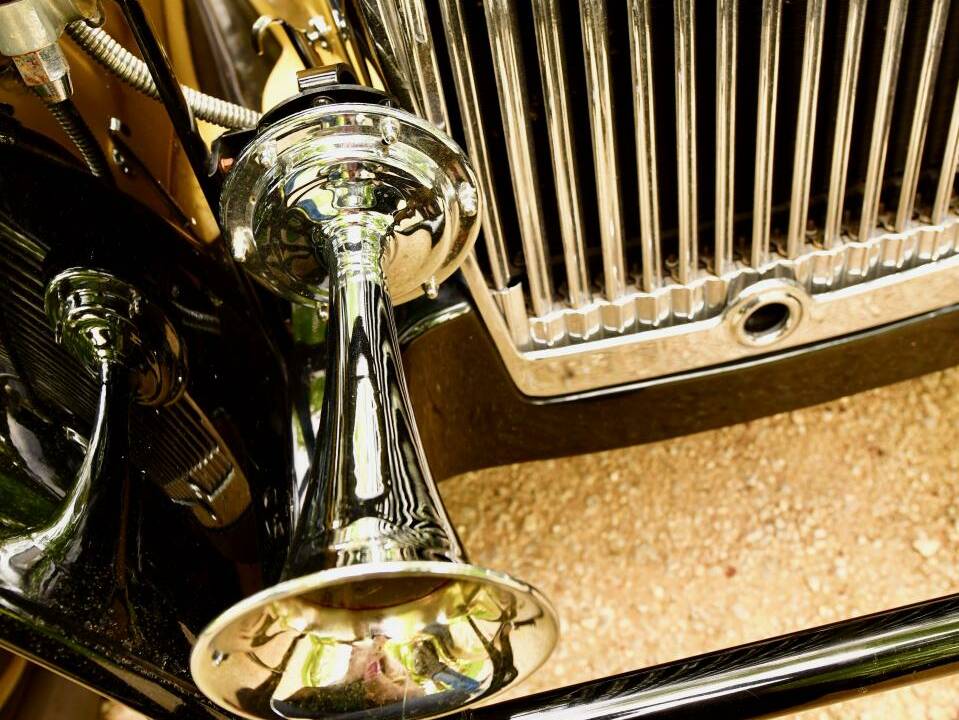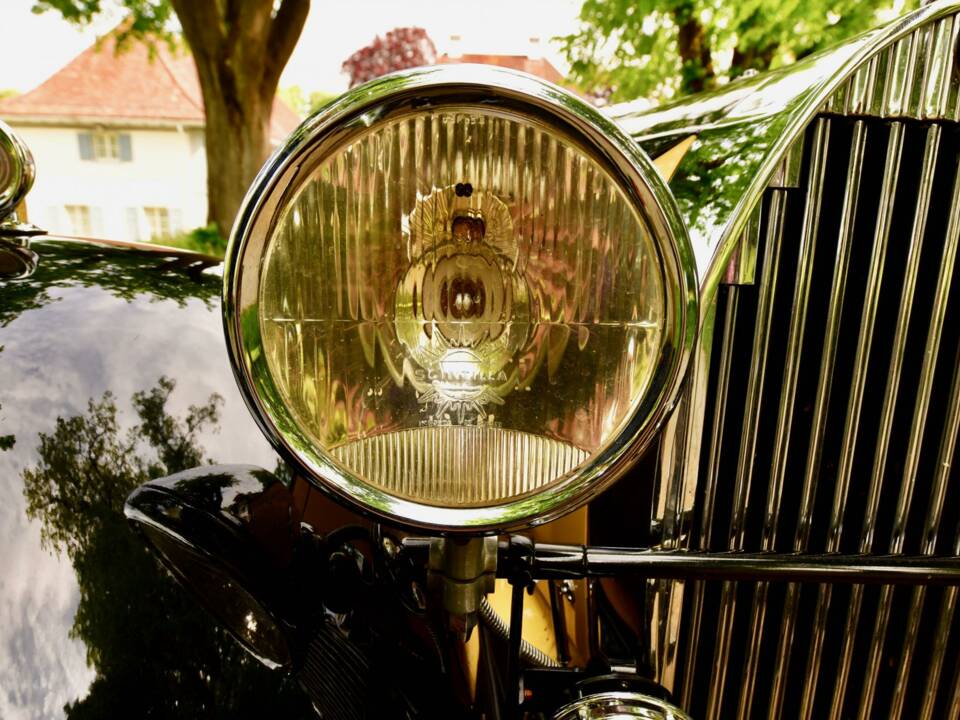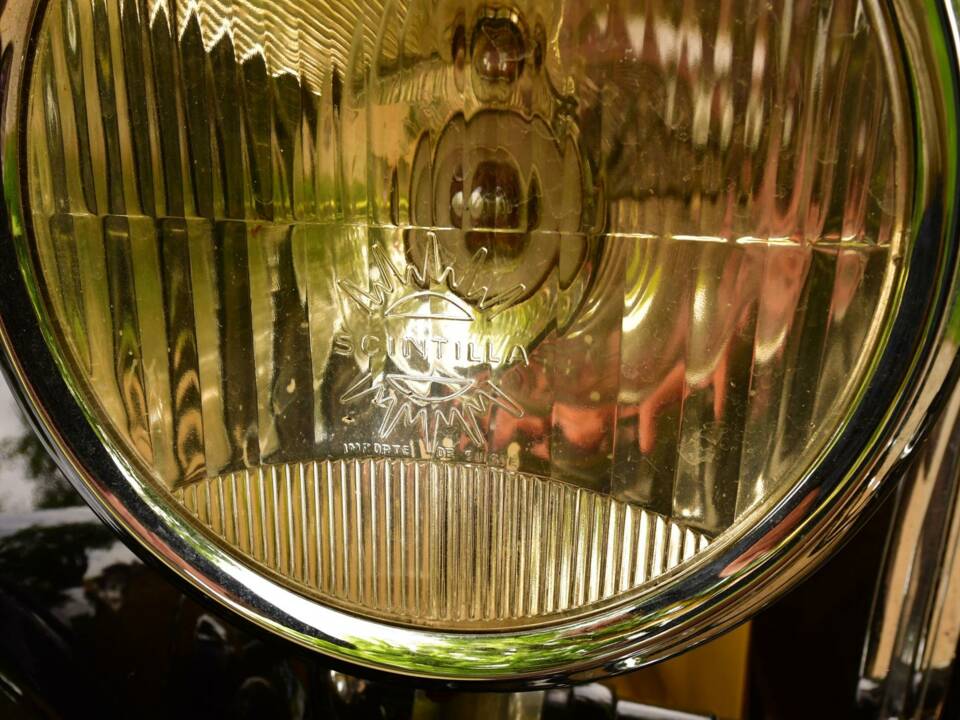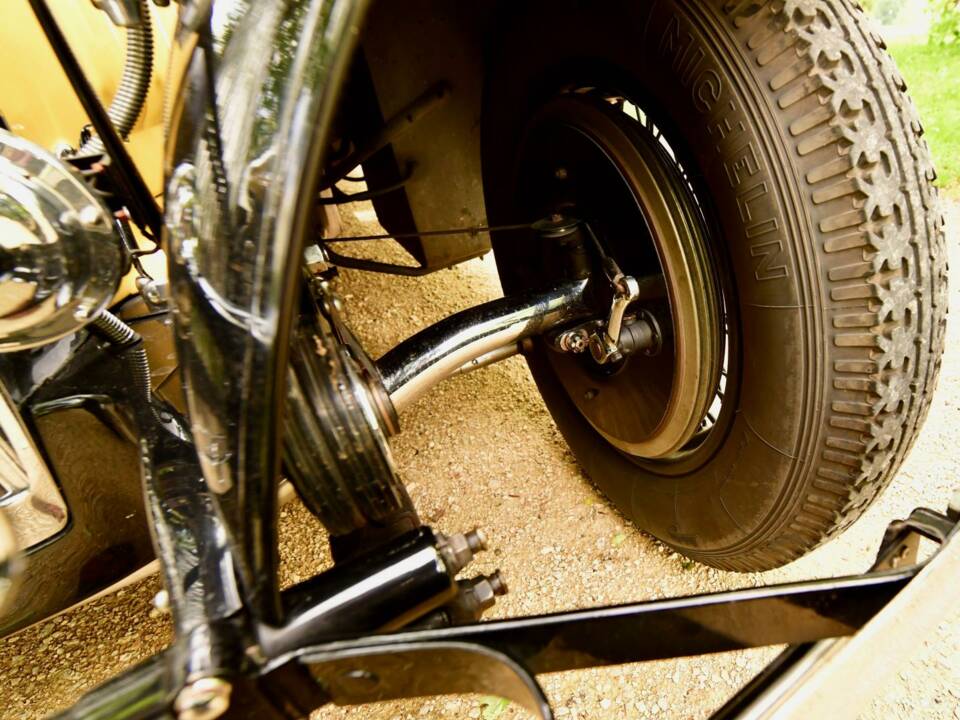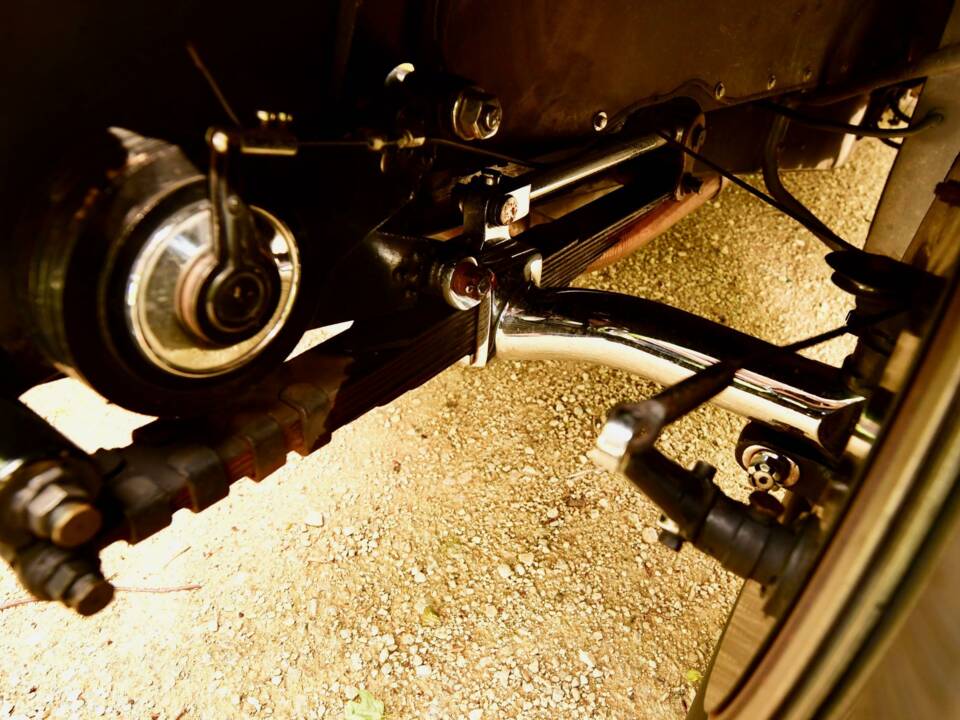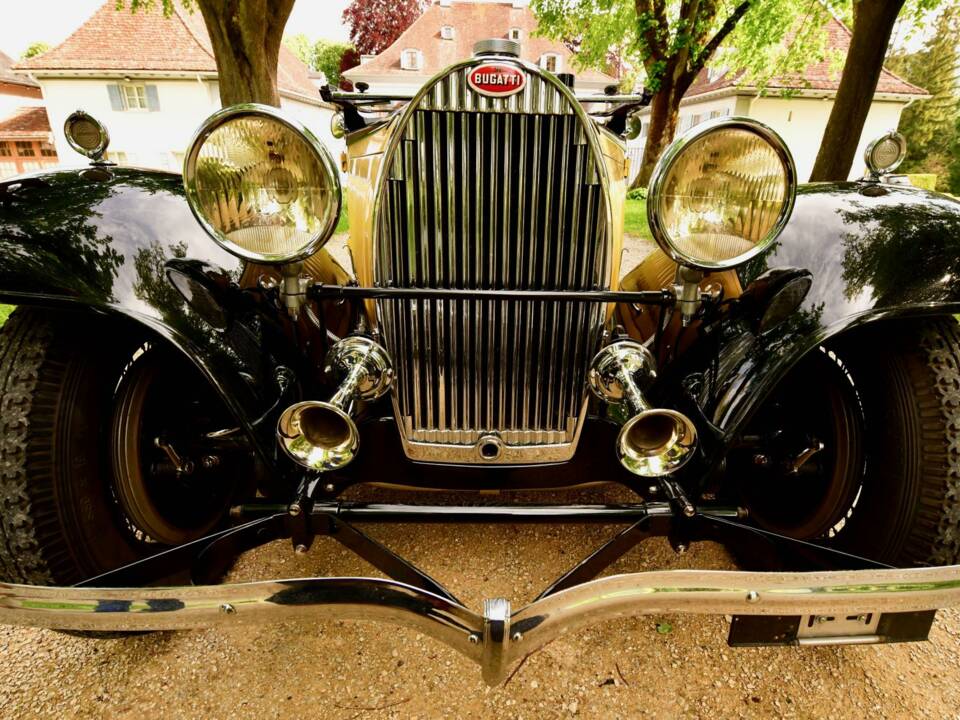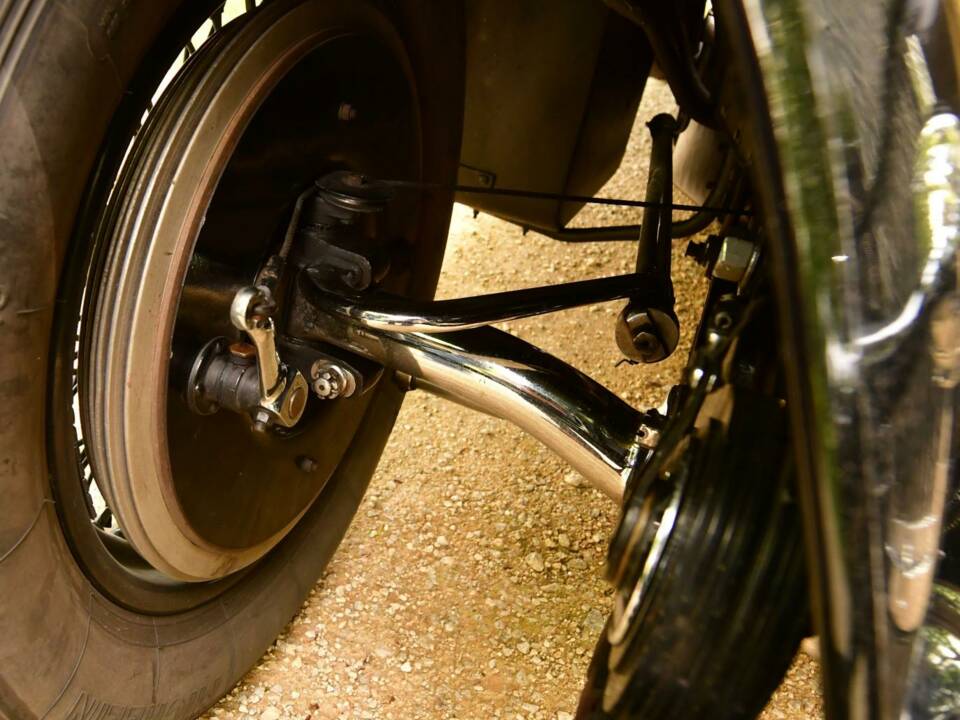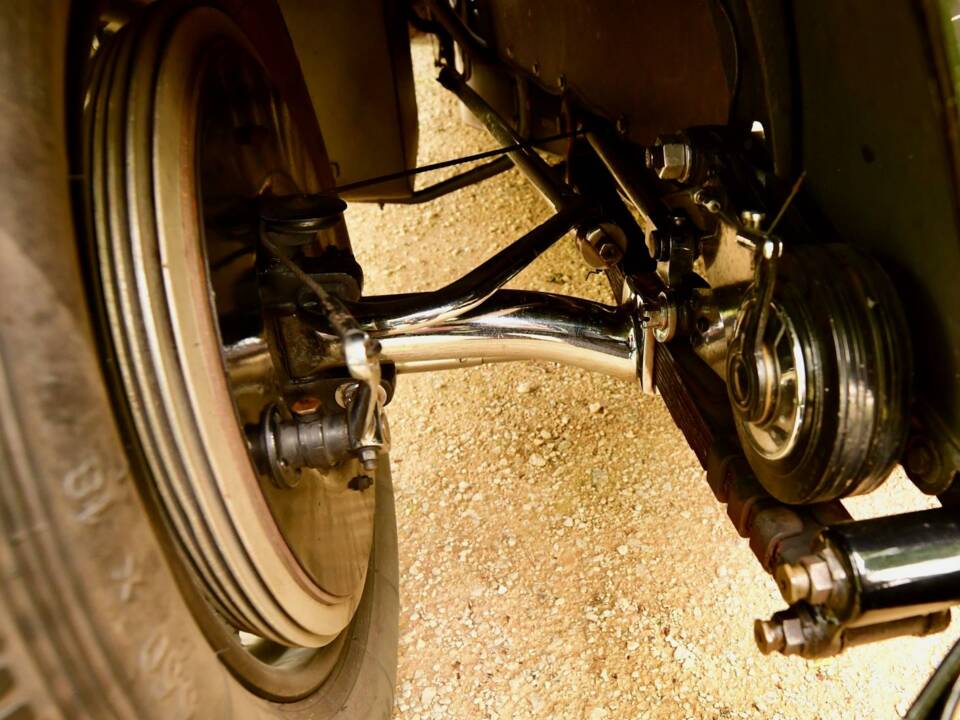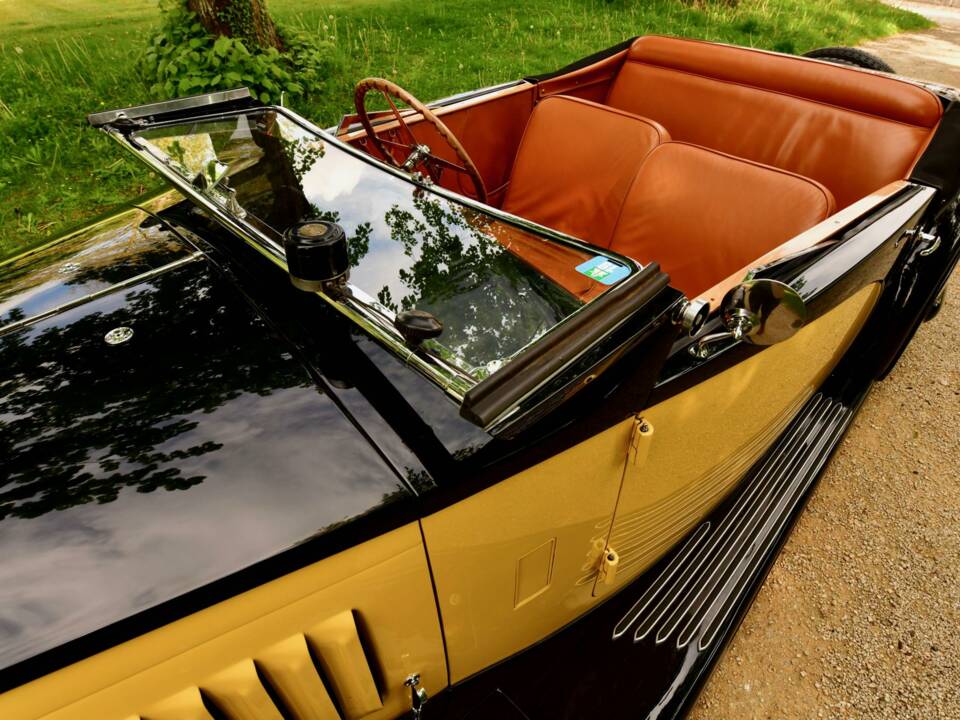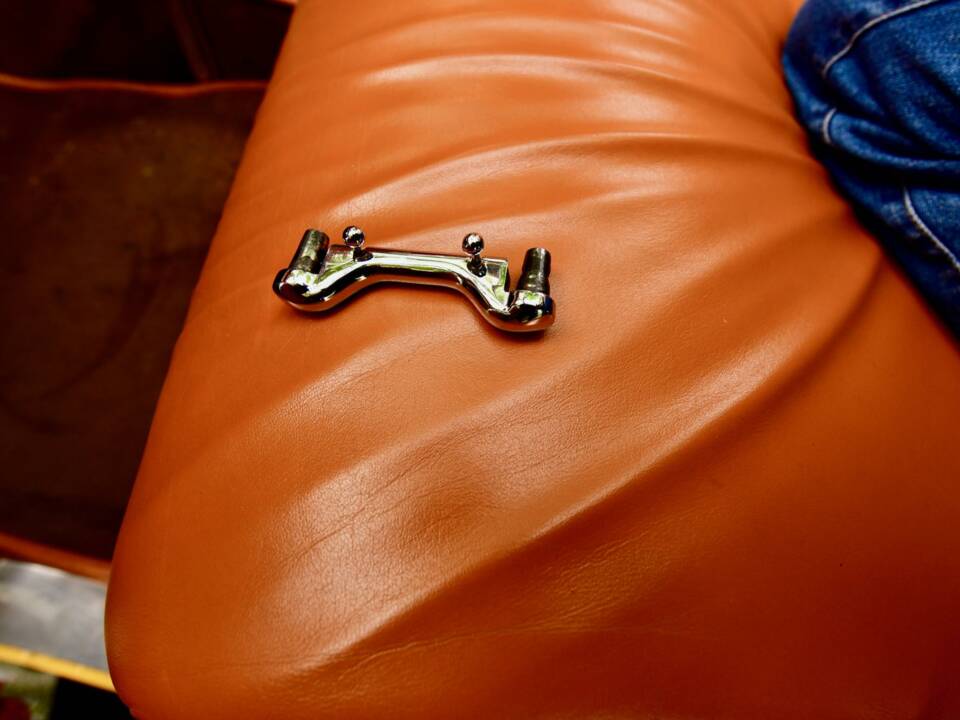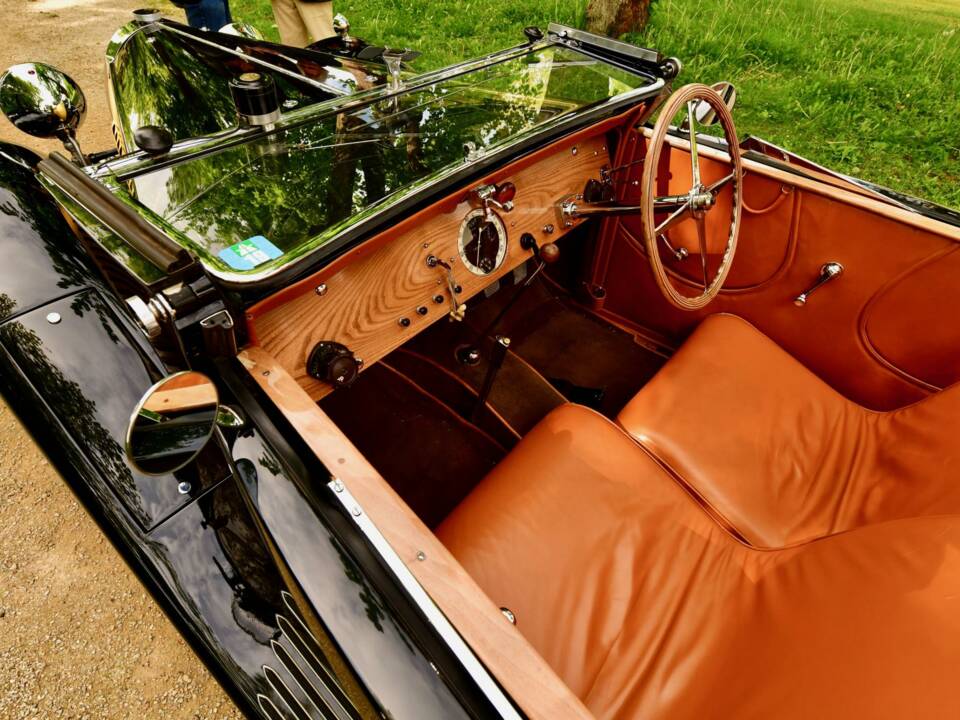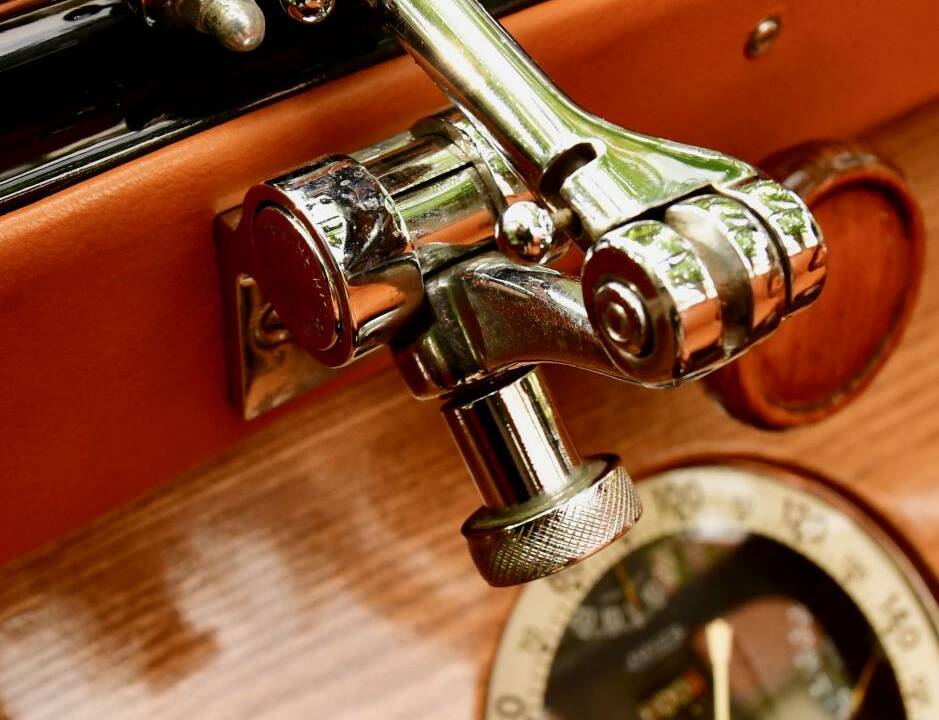1934 | Bugatti Typ 57 Stelvio
Alle Services zu diesem Fahrzeug
Beschreibung
1934 BUGATTI TYPE 57 STELVIO Cabriolet
Chassis Number: 57202
Registraton number: Swiss Registered.
The old saying 'like father, like son' springs to mind when considering Ettore and Jean Bugatti. Ettore's name is always associated with innovative, race-winning sports cars and beautiful grand tourers constructed to the highest standards of engineering and æstheticexcellence, but from 1930, after he persuaded his father to use twin-cam engines in lieu of the single overhead-cam designs which had served Bugatti so well through the 1920s, young Jean started to enjoy an increasingly active rôle at the Molsheim works.
Indeed, it was no less an authority than Hugh Conway who described the Bugatti Type 57 as "The most celebrated non-racing car that Bugatti ever produced," but it was almost entirely the brainchild of Bugatti fils. Jean intended to create a car which would combine the qualities of a sports car and grand tourer without compromising either and in the Type 57 he succeeded. Its appeal to the wealthy enthusiasts of the day was huge, and it was in production from 1934 until war forced the works to stop in 1940. Only a little over 600 were produced in that time, not including the 57S and 57SC sports models, most of them wearing one of five bodies by Gangloff, Bugatti's coachbuilder of choice: the Aravis two-seat cabriolet, Atalante two-seat coupé, Galibier saloon, Stelvio four-seat cabriolet and Ventoux four-seat coupé.
With its 3,257 cc, dohc straight-eight and luxuriously-appointed coachwork, the Type 57 represented one of the finest cars available in the 1930s and came with a suitably exclusive price attached. For something more exclusive still, one could always specify fully bespoke bodywork by a different coachbuilder, but perhaps the most distinguished Type 57 of them all is this Stelvio cabriolet, chassis 57202, which is believed to be a pre-series production car and is unique in multiple details.
As far as its documented history reveals, 57202 was in existence by July, 1934, but it is an earlier car than its chassis number would imply; Bugattis were not allocated chassis numbers until such time as they were sold. The order of production can usually be determined by the engine number, which in this case is 47, and its body is number 11. From this, it is known to have been among the first 50 examples produced, but there are good reasons for believing that it may only have been the second or third Type 57 chassis constructed.
Independent thinking
The first prototype was substantially different from all later cars. It had a raked radiator and fully independent front suspension, but it has been lost to time. Jean Bugatti was very keen to have independent suspension, but Ettore wouldn't allow it. It is understood that two Type 57s were then produced with a kind of semi-independent suspension utilising a split front axle which had some greater flexibility and helped to eliminate movement in the axle on bumps, but for the series production cars Ettore exerted his influence and ensured that all were made with conventional tubular front axles. Fascinatingly, we find on 57202 a split front axle. The idea was revived a while later for the Type 57S, but 57202's is of a different design. We also observe on 57202 a wider front track than that seen on production 57s. The disadvantage of front suspension with leaf springs is that the axle performs an unwanted steering movement when it compresses and rebounds. When it compresses, the leaf spring stretches and the axle mount moves forward if it is held at the back. At the front, it is held by a rocker to compensate. When it rebounds, it is the other way round: when you drive into a curve, one side compresses and the other extends. So you have an additional steering movement. When you drive over a bump, this causes compression and rebound, which in turn leads to an unwanted steering movement. The car does not track straight. Jean Bugatti solved this problem. He anchored the axle on both sides with a support rod with a pivot point. An unwanted steering movement is therefore no longer possible. The axle is forged from one piece with the support rod mount. The compensation of the length change of the leaf spring is carried out by a rocker.
The bodywork provides further food for thought. Although officially it's a Stelvio, it is not quite like any other Stelvio known to exist today. The elegant three-position 'disappearing' hood was used on a very limited number of early cars, but 57202 utilises a uniquely complex mechanism which must logically have been simplified for all the other cars. The windows and twin spare wheel arrangement are unique, and so are the front wings. All other 57s feature a 'fuller-bodied' style of wing which begins halfway down the front wheel. The body on 57202 was long believed to have been built by Gangloff, but in-depth examination revealed that it was not. It is now thought it must have been built at the Bugatti works to Jean's own design. Notably, the completed car was used to illustrate the first Type 57 sales brochure. It is depicted in two different colour schemes, one light and dark such as it sports today, and the other all dark. Or could it be that there were two identical bodies made, one of which has vanished?
An unmatched drive
That may not amount to concrete proof that we're looking at a pre-series chassis, but it seems like compelling evidence. In any case, we can now take the story up from where the documented history begins. This car was ordered on June 19th, 1934, by the Bugatti agent Monestier in Lyon, and was delivered on June 30th for 64,000 francs. Its first private owner was George Darne, a manufacturer of bespoke hunting rifles in the Quartier de le Sophère in Saint-Étienne, in the Loire region of France. The Bugatti's second owner bought it in 1937. Their identity is unknown, but it is believed they were killed in 1939 following the outbreak of war.
The car re-emerges in 1945, when it was bought by M. Collange, a dentist in Aubenas in the Ardèche department. By this point, the appearance of its doors had been modified. Collange undertook to modify it further by 'filling in' the front wings, so that they resembled those used on the series-production models. It was sold in 1952 to one Mrs. Combes, who kept a garage in Val-des-Bains, and she then sold it in 1958 to Henri Girod-Eymery, an enthusiast who enjoyed some renown as a writer on railway topics. He also maintained a small private motor museum in Uzès, and it was there that 57202 was documented by Hugh Conway in 1962. Girod-Emery retained it until the early 1970s, after which it was owned by the noted collectors Francky Dumontant and Hervé Charbonneaux.
In the 1990s, the «57202» was restored to its original appearance at KCA in Milan, restoring the correct style of doors and fenders. It changed hands a few more times until in 2011 it was acquired by the present owner, a Swiss Bugattiste, who has enjoyed taking it to numerous rallies and concours around Europe. As the owner of another Type 57, he describes the later cars as more comfortable and easier to drive, but opines that 57202 is much more a sports car. Other 57s, he says, can be prone to understeer, whereas the 57202's split axle contributes towards greatly improved roadholding and more sensitive feedback, which helps it to accelerate through corners and makes altogether closer to Jean Bugatti's vision for how the Type 57 should have been.
After 13 years, the present owner has decided that it is time to move the car on, and so it is being offered for sale through Vintage & Prestige. It represents a unique opportunity to acquire what is very likely one of the most important surviving Type 57s, but with lots of scope for further fascinating research.
Fahrzeugdetails
Fahrzeugdaten
- Marke
- Bugatti
- Modellreihe
- Typ 57
- Modell
- Typ 57 Stelvio
- Erstzulassung
- Nicht angegeben
- Baujahr
- 1934
- Tachostand (abgelesen)
- Fahrgestellnummer
- 57202
- Motornummer
- Nicht angegeben
- Getriebenummer
- Nicht angegeben
- Matching numbers
- Nicht angegeben
- Anzahl Besitzer
- Nicht angegeben
Technische Details
- Karosserieform
- Cabriolet
- Leistung (kW/PS)
- 99/135
- Hubraum (cm³)
- 3257
- Zylinder
- 8
- Anzahl Türen
- 2
- Lenkung
- Rechts
- Getriebe
- Manuell
- Gänge
- Nicht angegeben
- Antrieb
- Heck
- Bremse Front
- Trommel
- Bremse Heck
- Trommel
- Kraftstoff
- Benzin
Individuelle Konfiguration
- Außenfarbe
- Andere
- Herstellerfarbe
- -
- Innenfarbe
- Andere
- Innenmaterial
- Andere
Sonderausstattung
- Rechtslenker
Zustand & Zulassung
- Gutachten vorhanden
- Zustand
- Zustandsbericht beauftragen
- Zugelassen
- Fahrbereit
Anfahrt

Vintage & Prestige Fine Motor Cars
Richard Biddulph
Globe Industrial Estate 9
RM17 6ST Grays
🇬🇧 Vereinigtes Königreich
